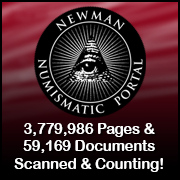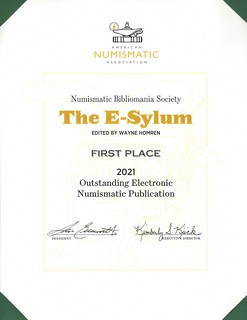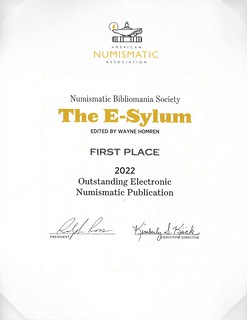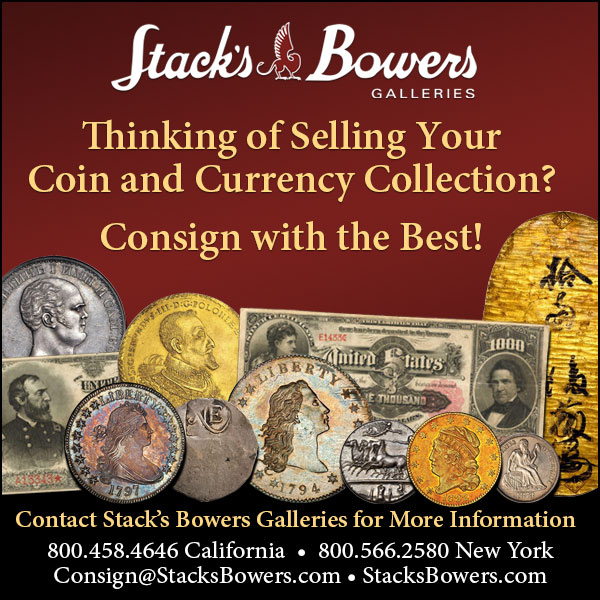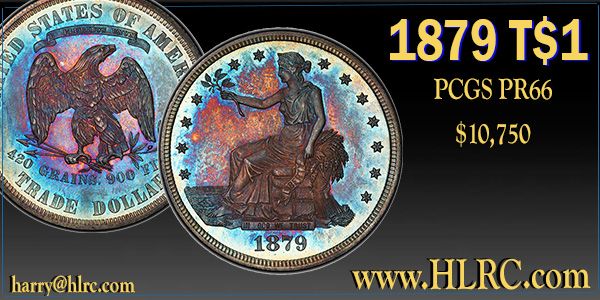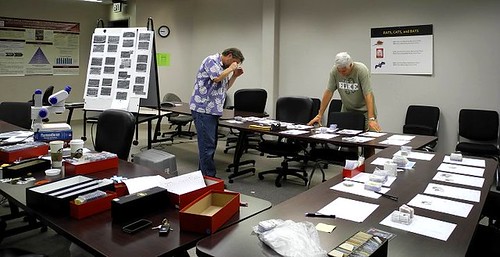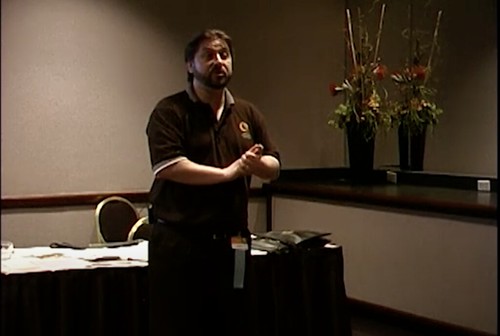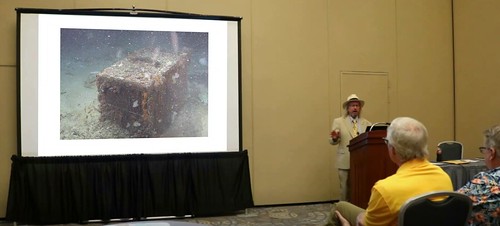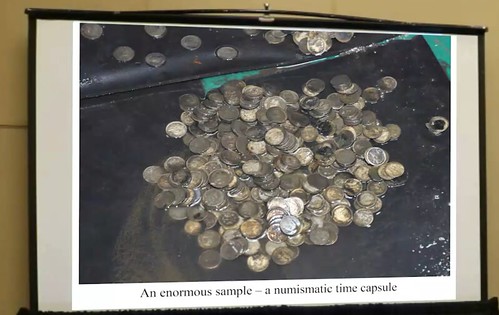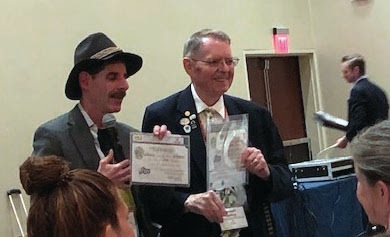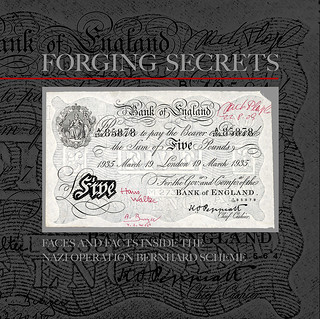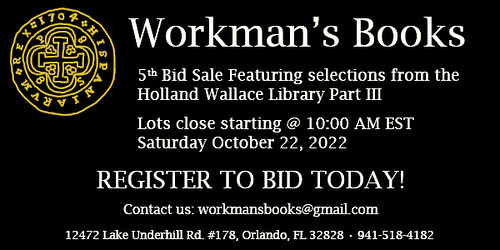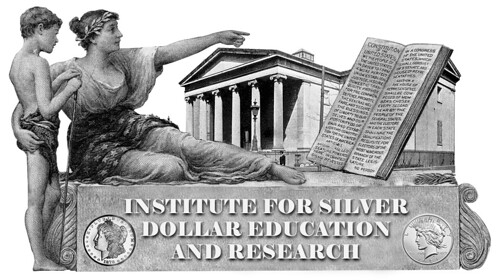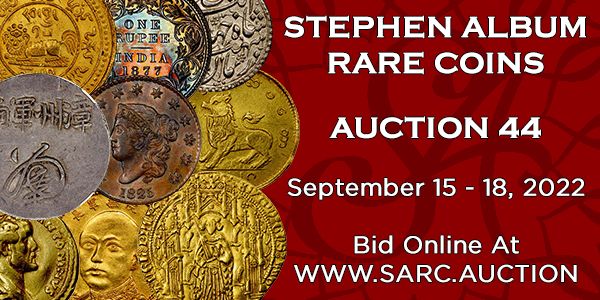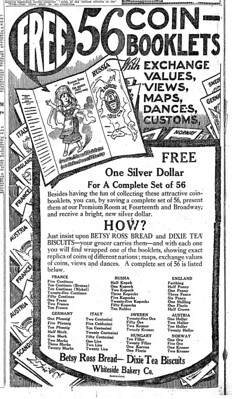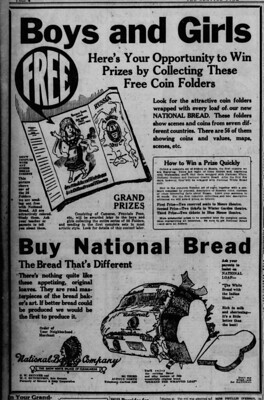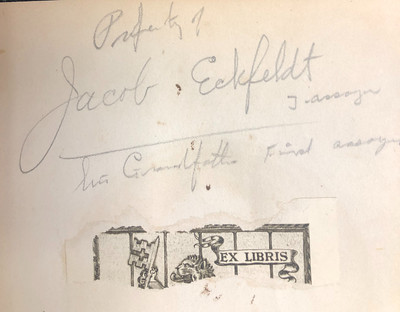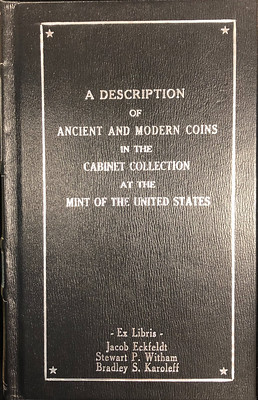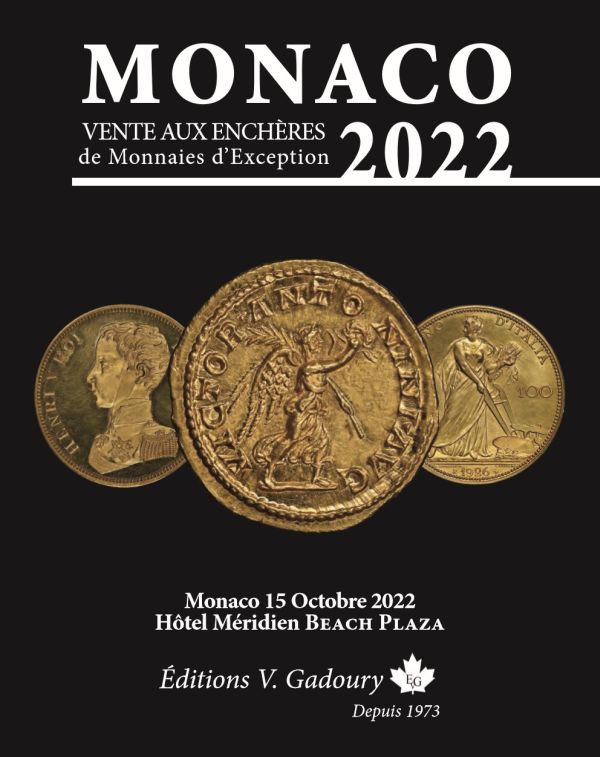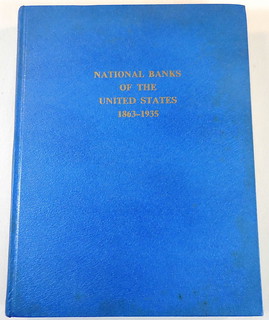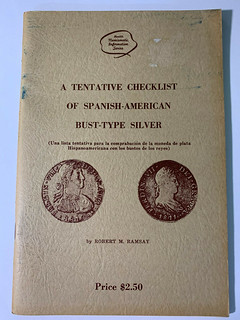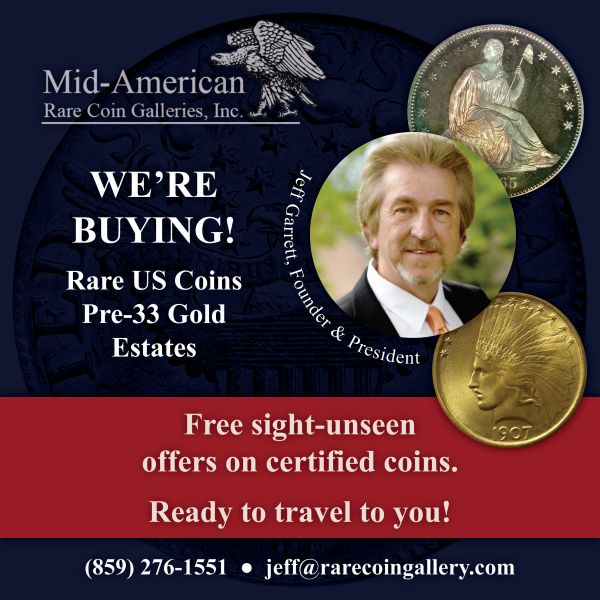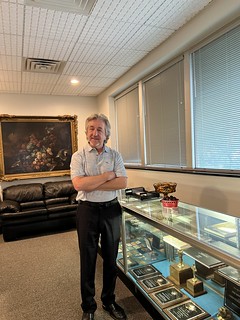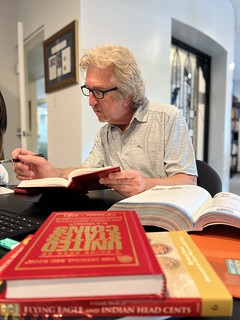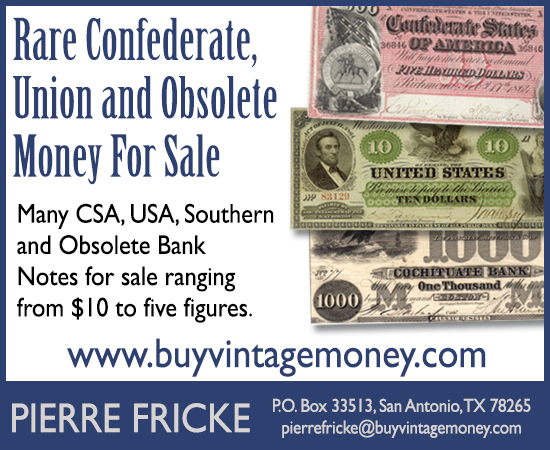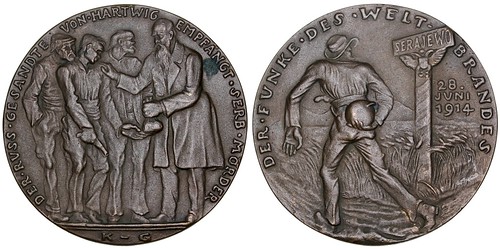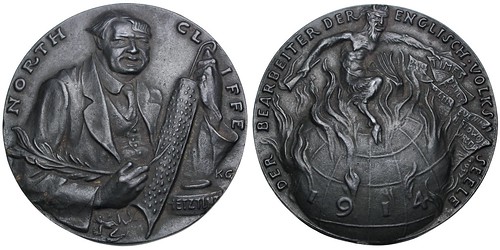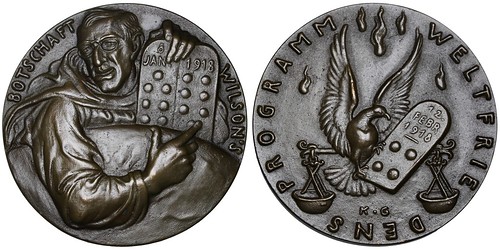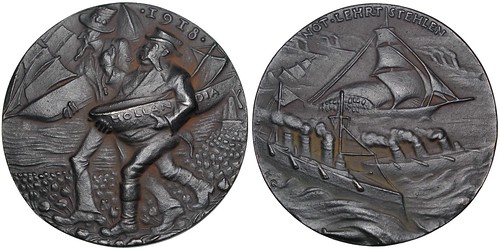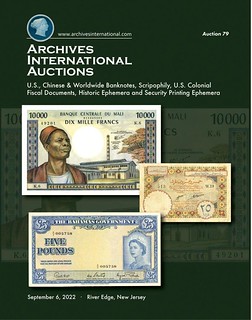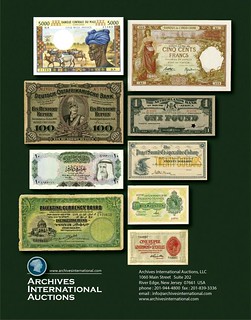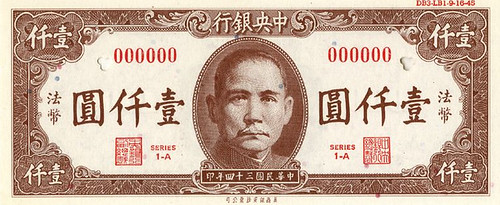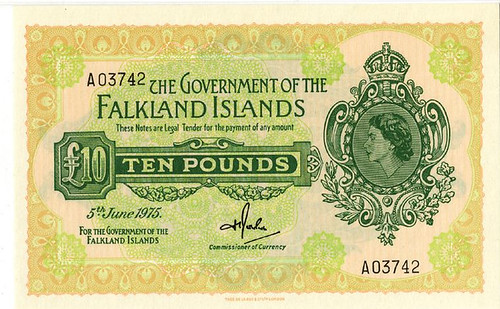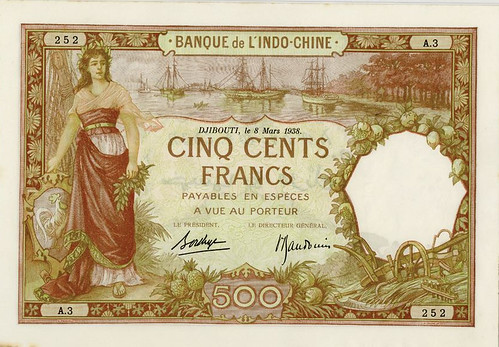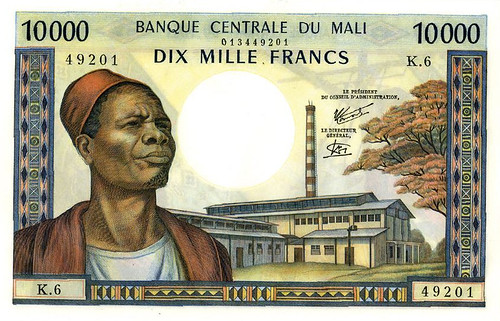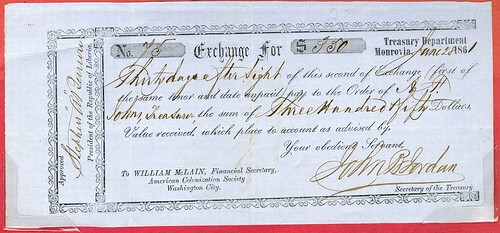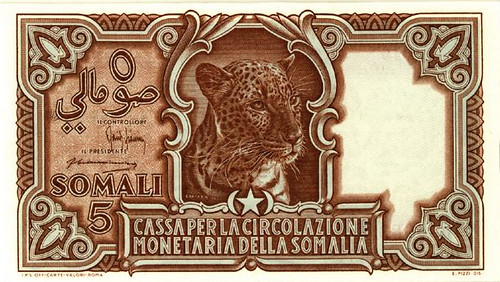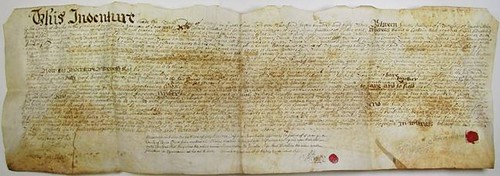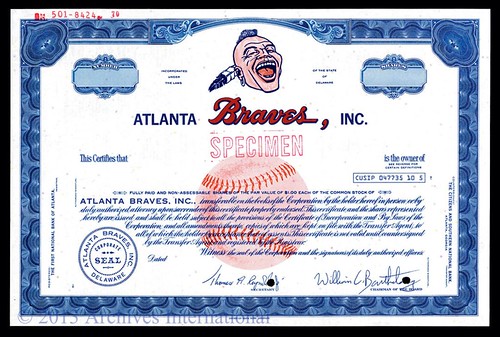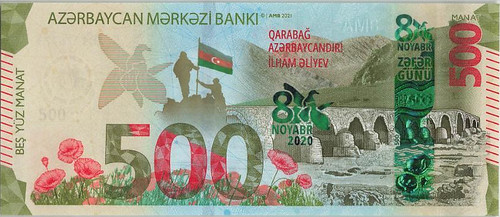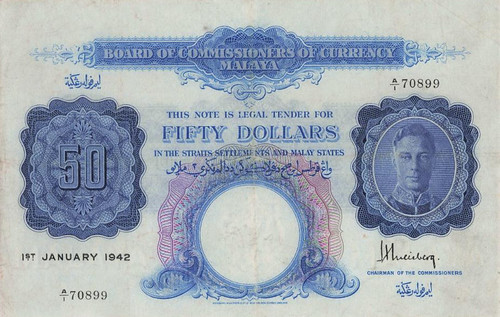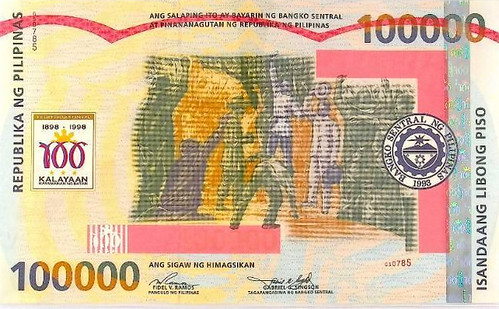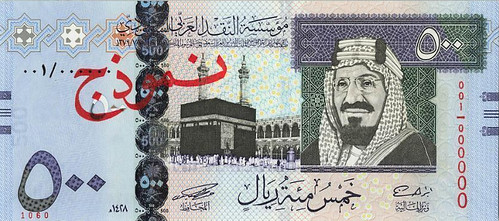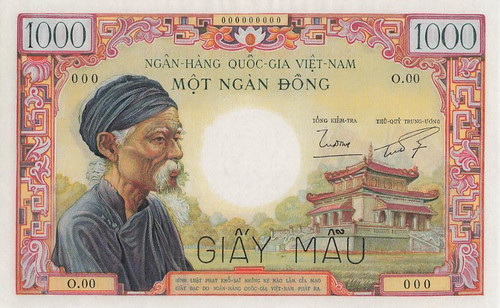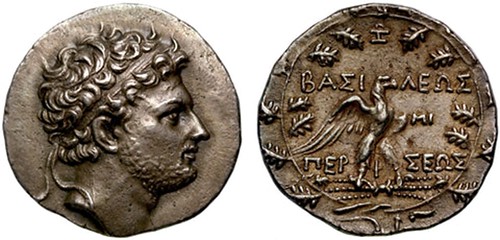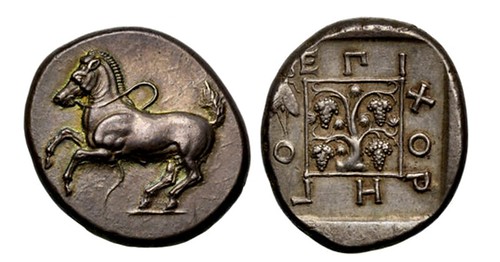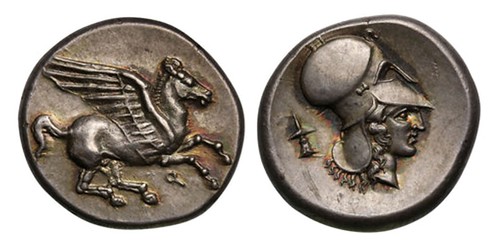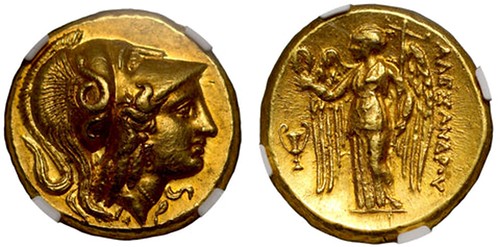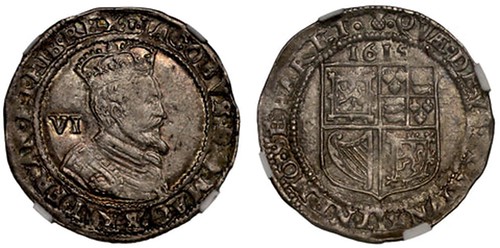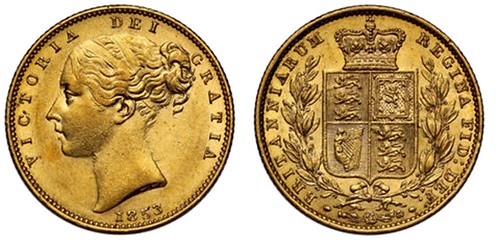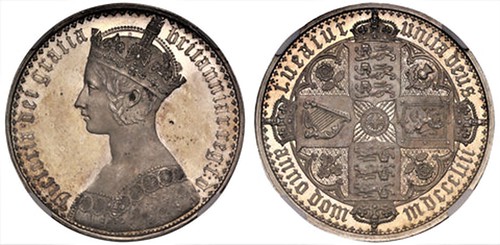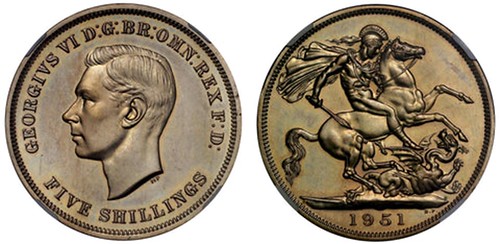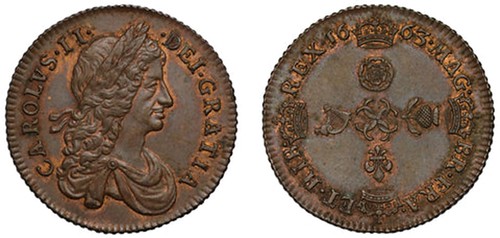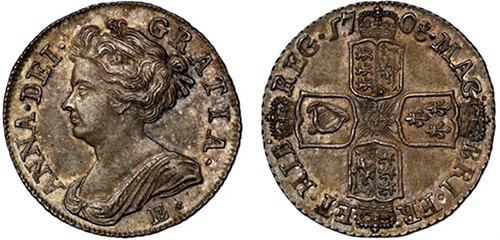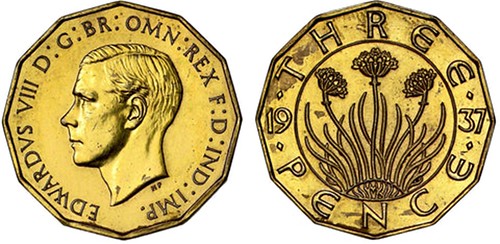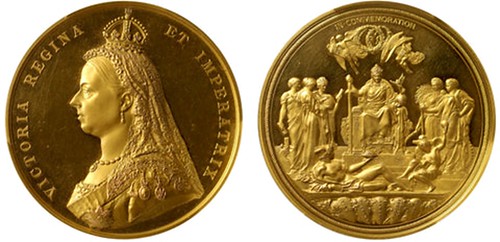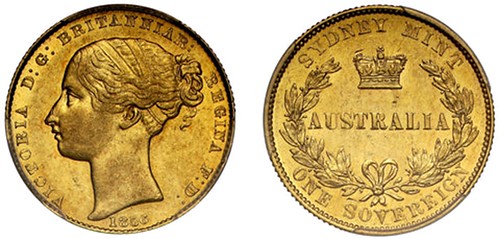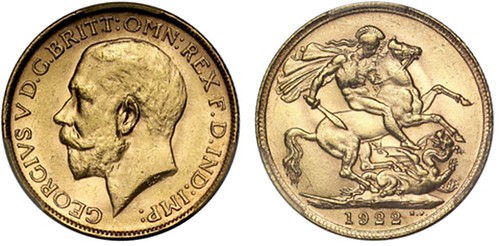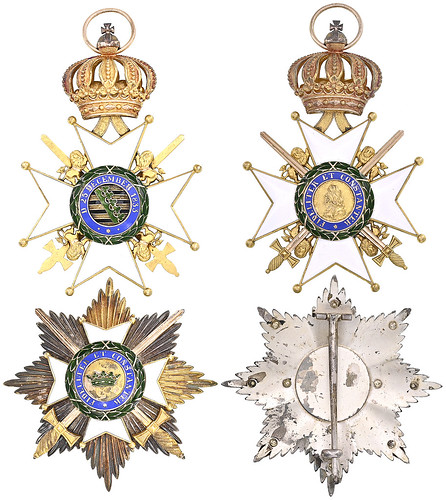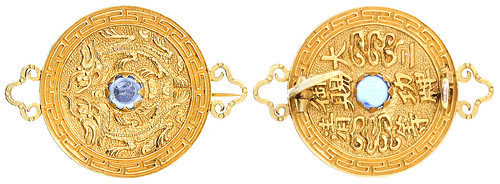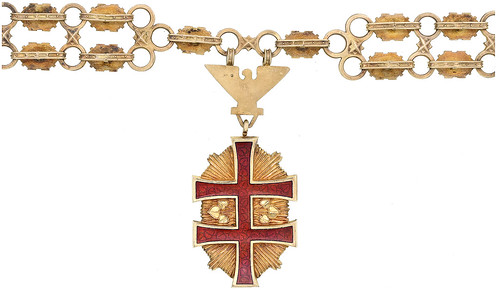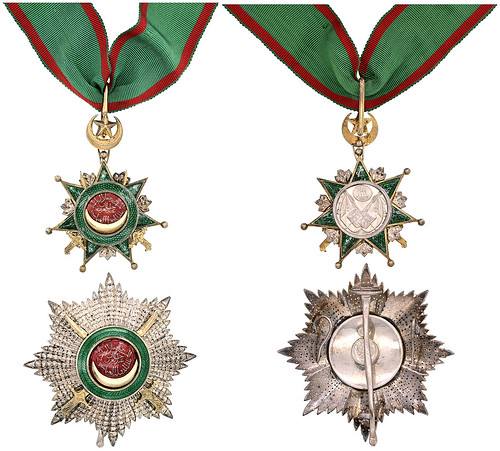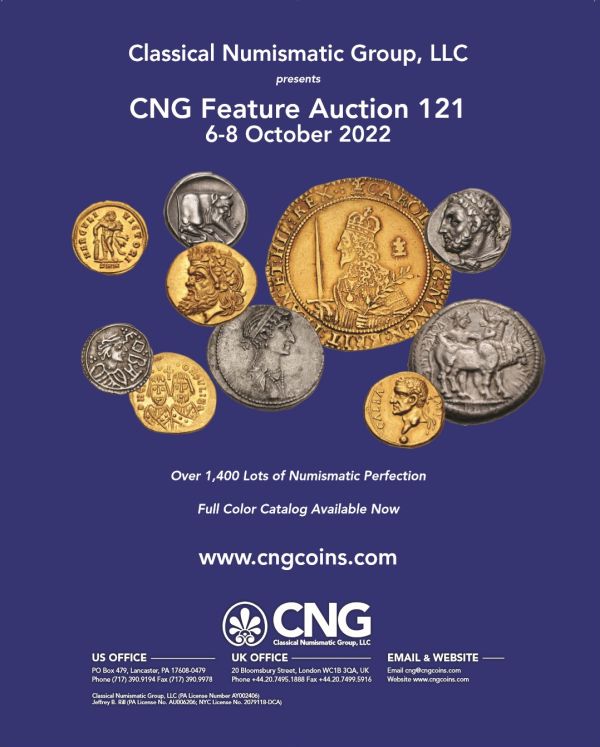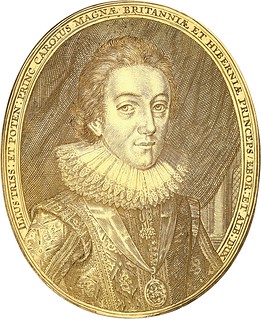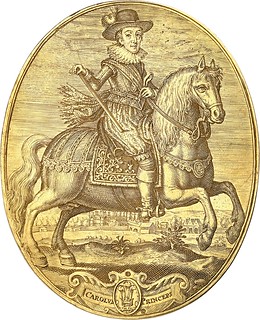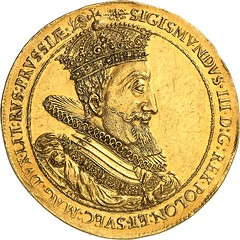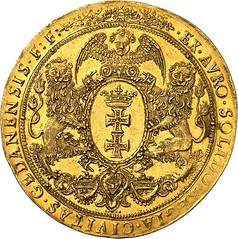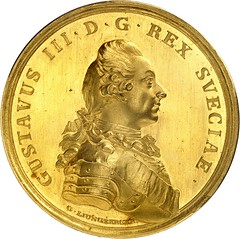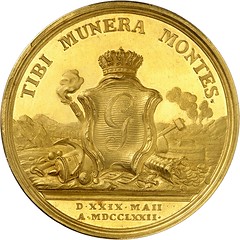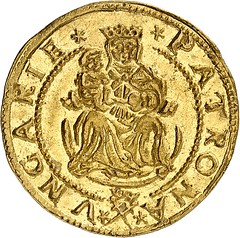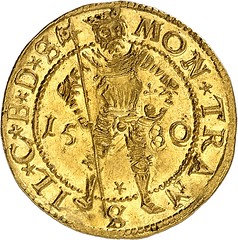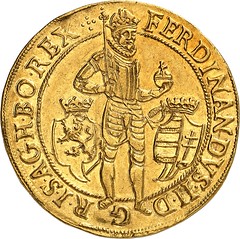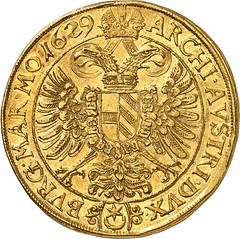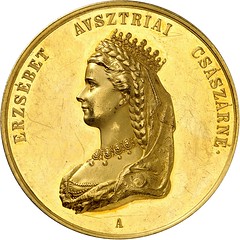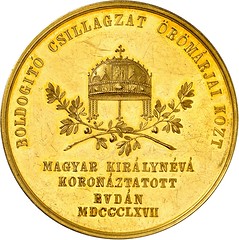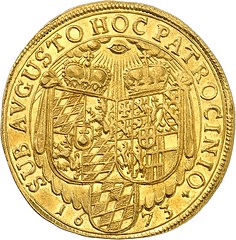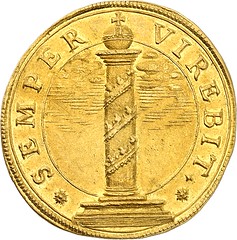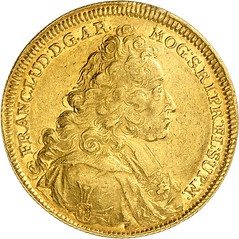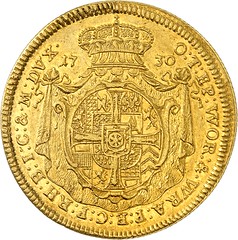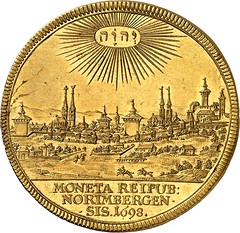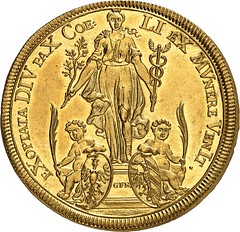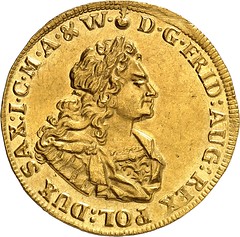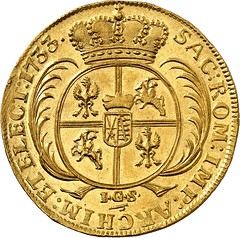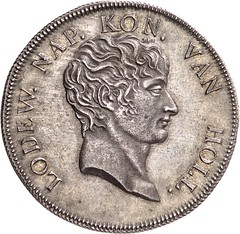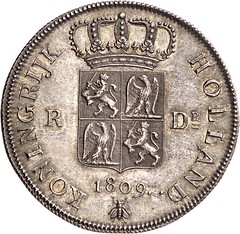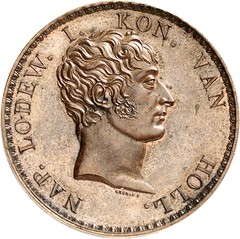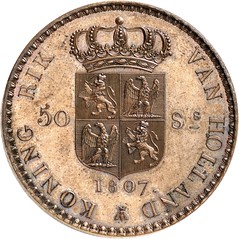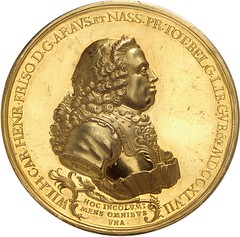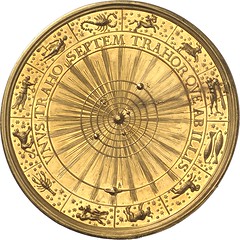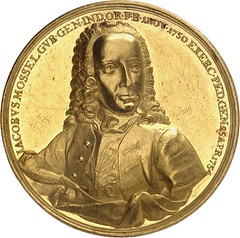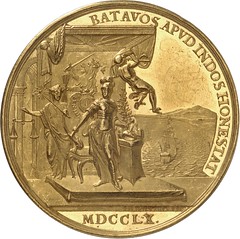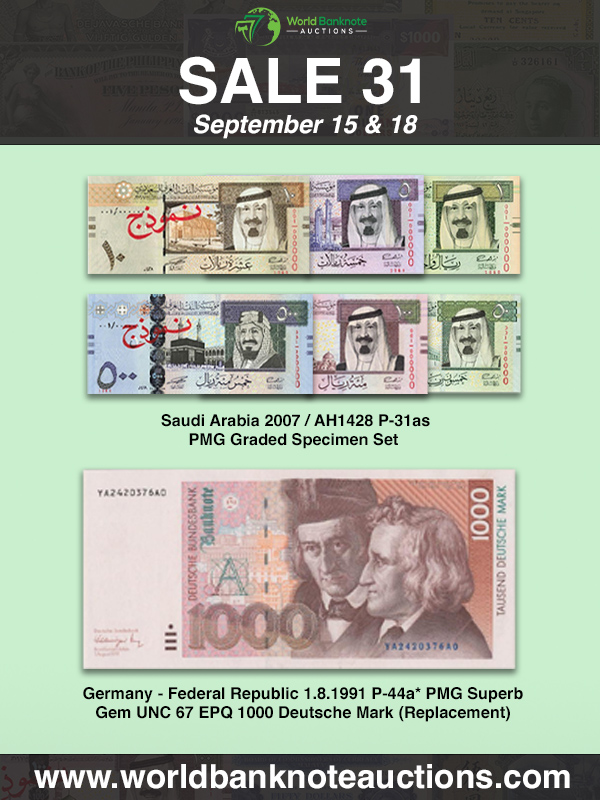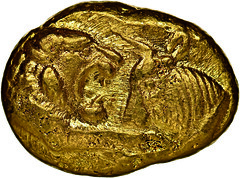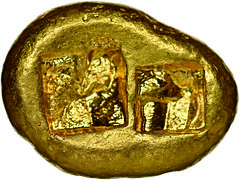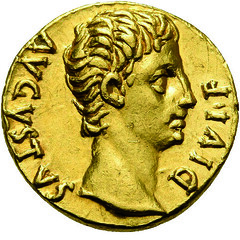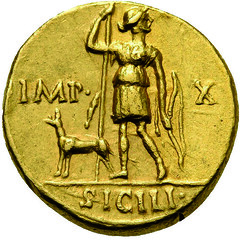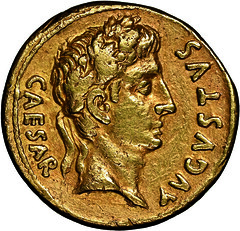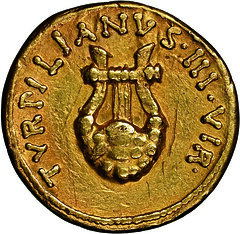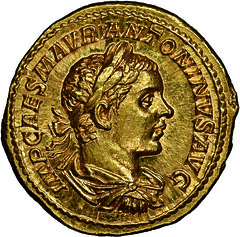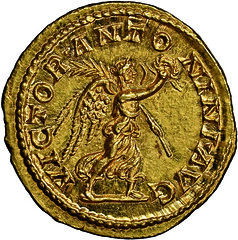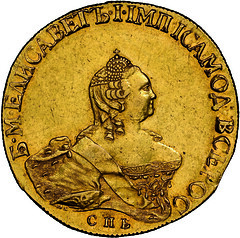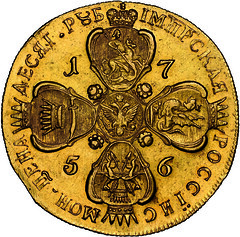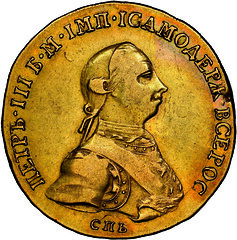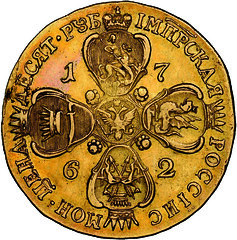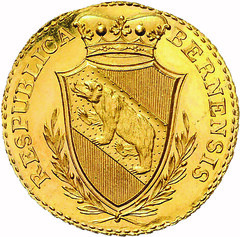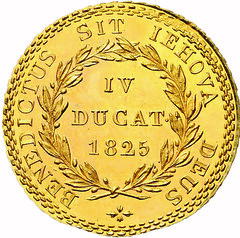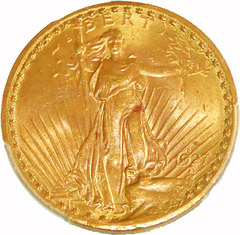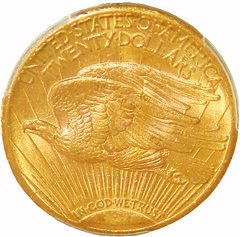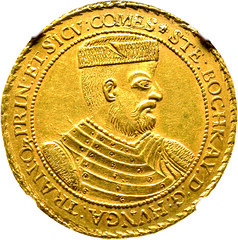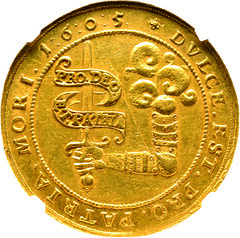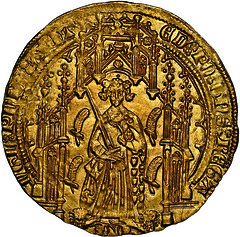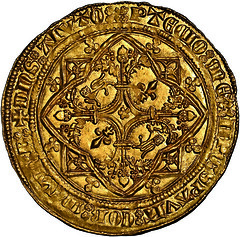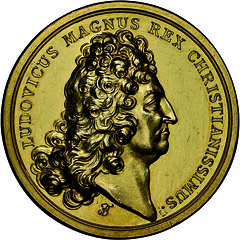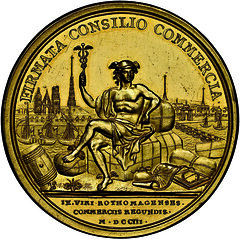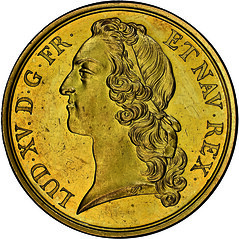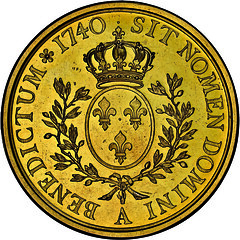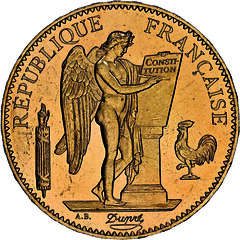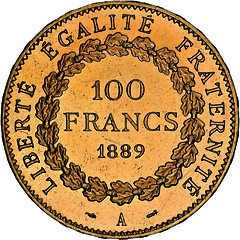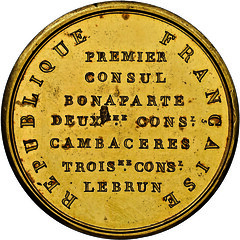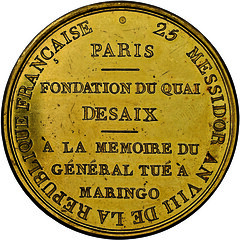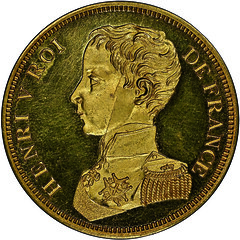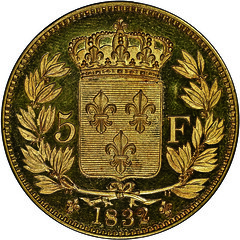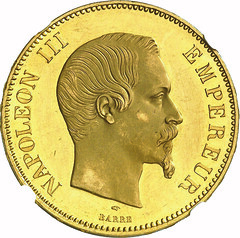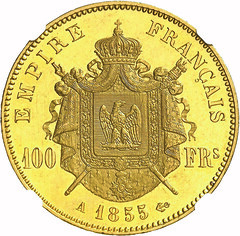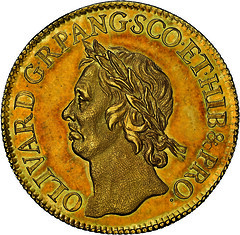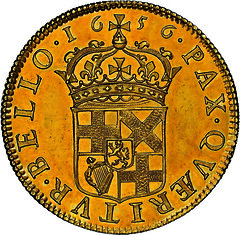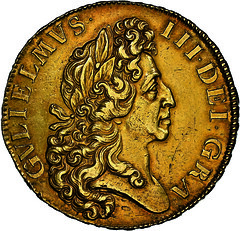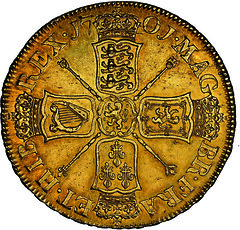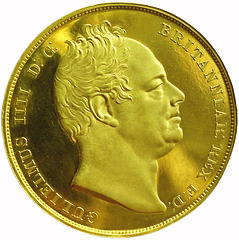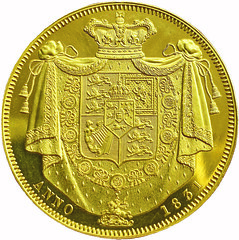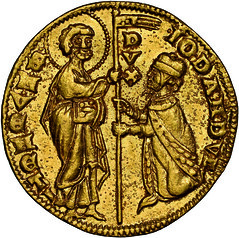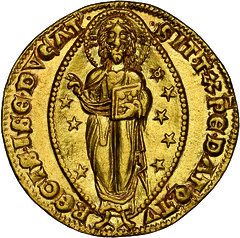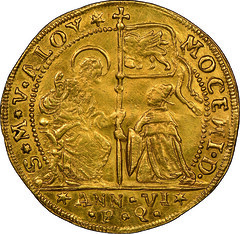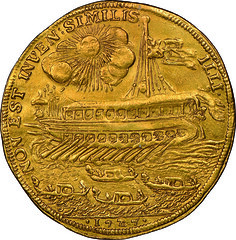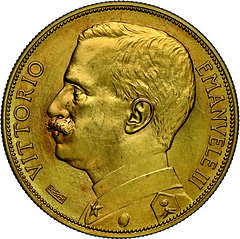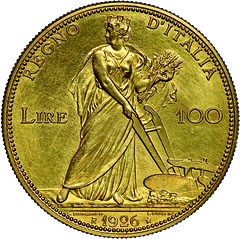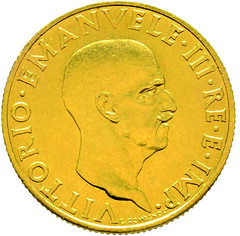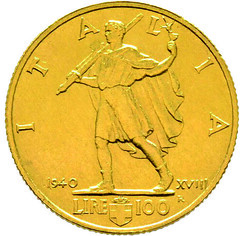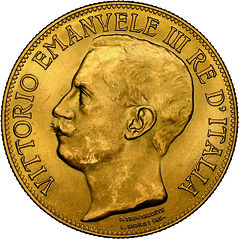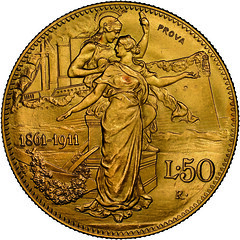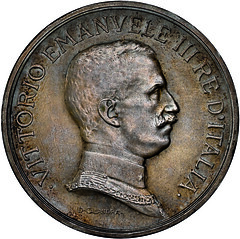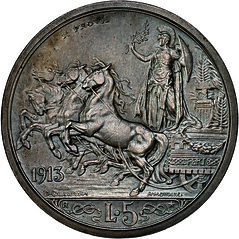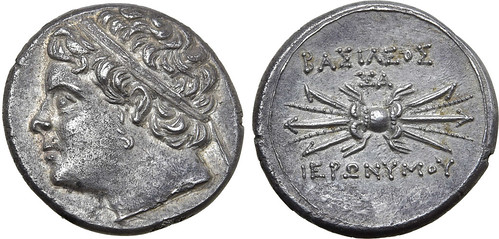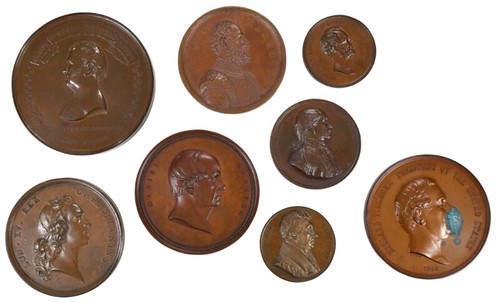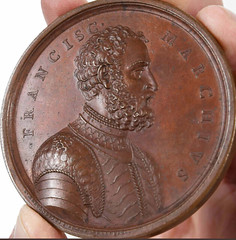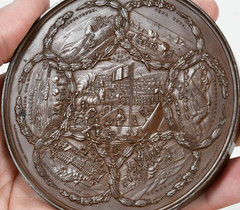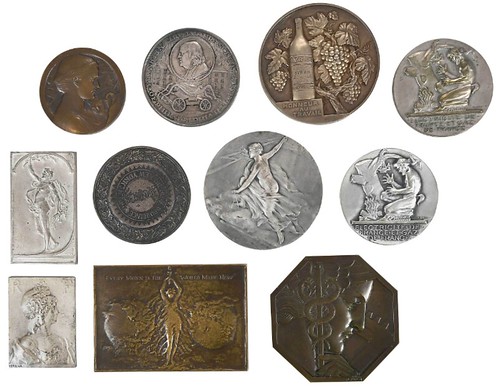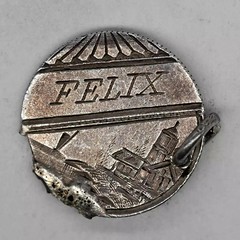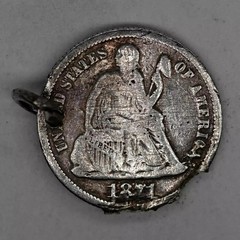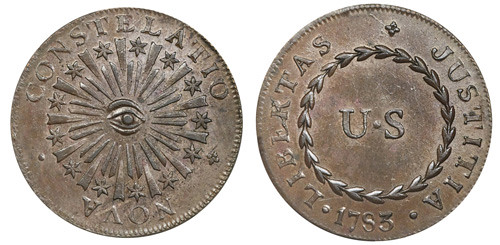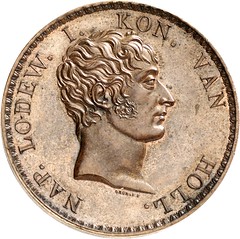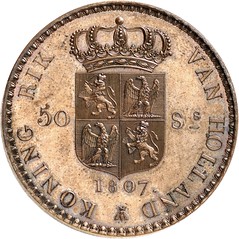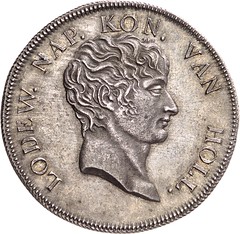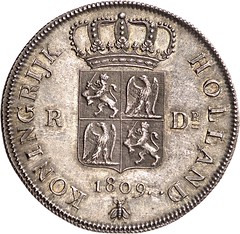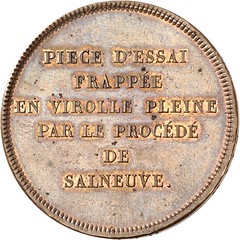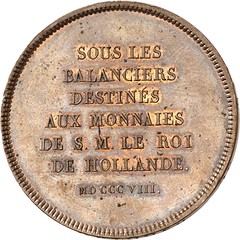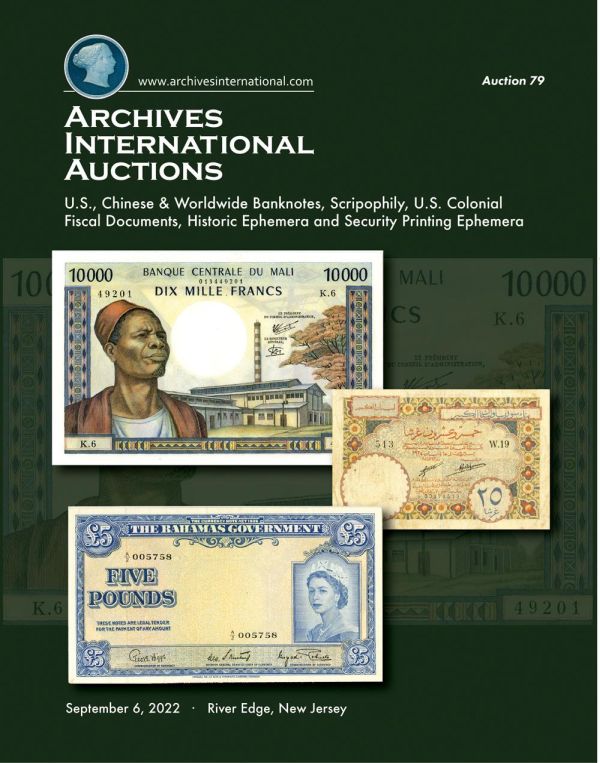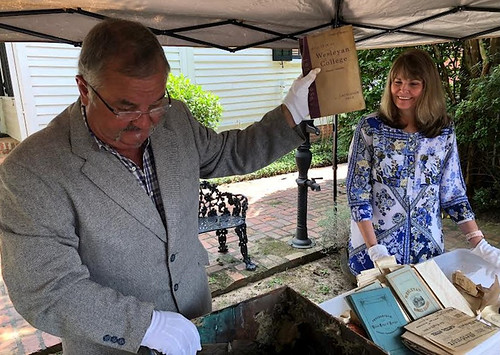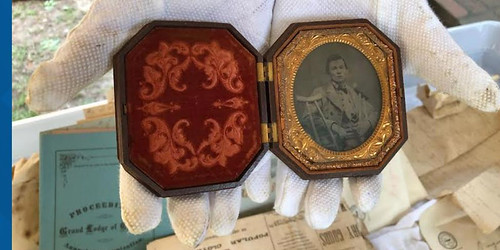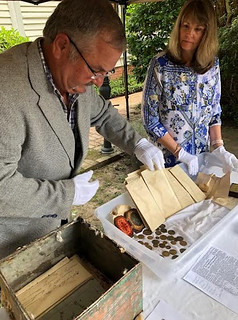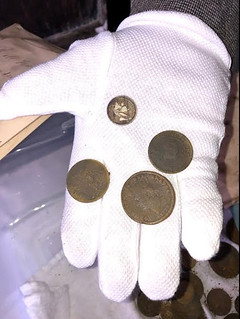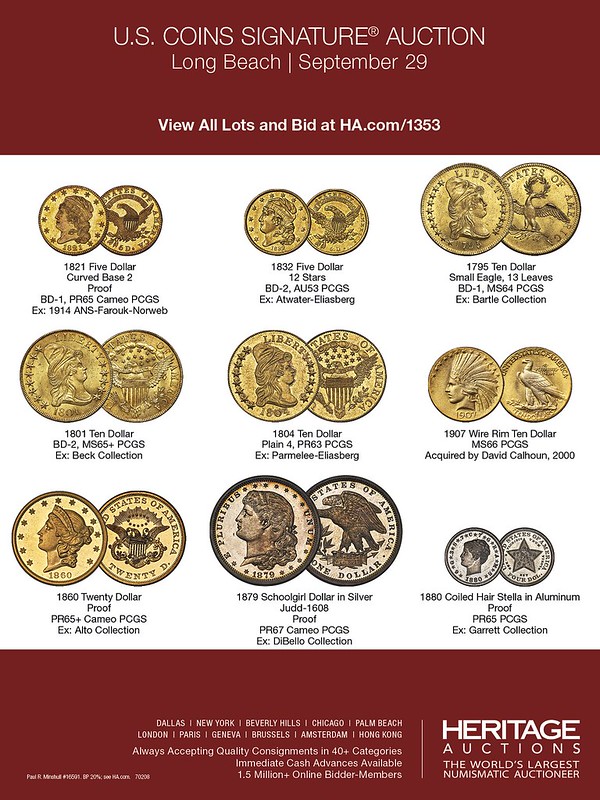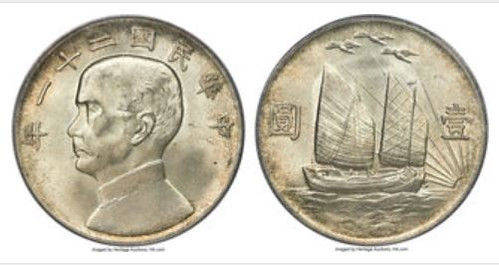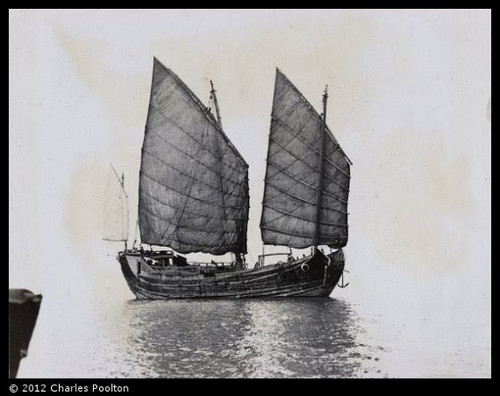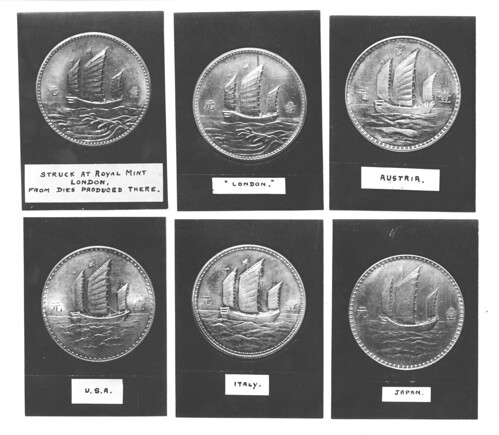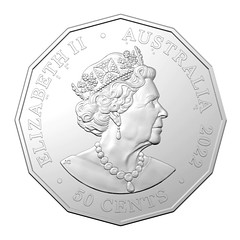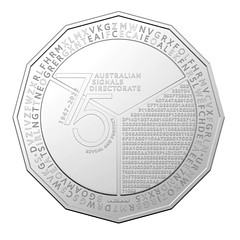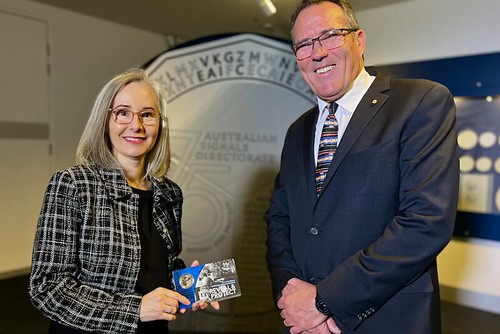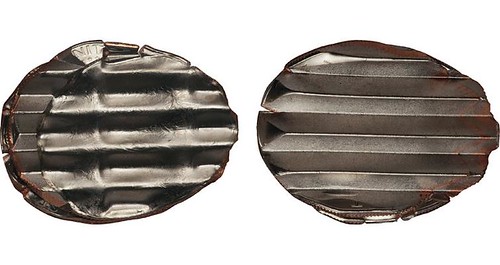
Visit our NBS Sponsors



About UsThe Numismatic Bibliomania Society is a non-profit association devoted to the study and enjoyment of numismatic literature. For more information please see our web site at coinbooks.org SubscriptionsThose wishing to become new E-Sylum subscribers (or wishing to Unsubscribe) can go to the following web page link MembershipThere is a membership application available on the web site Membership Application To join, print the application and return it with your check to the address printed on the application. Print/Digital membership is $40 to addresses in the U.S., and $60 elsewhere. A digital-only membership is available for $25. For those without web access, write to: Charles Heck, Treasurer AsylumFor Asylum mailing address changes and other membership questions, contact Chuck at this email address: treasurer@coinbooks.org SubmissionsTo submit items for publication in The E-Sylum, write to the Editor at this address: whomren@gmail.com BUY THE BOOK BEFORE THE COINSale Calendar |
- WAYNE'S WORDS: THE E-SYLUM SEPTEMBER 4, 2022
- THE E-SYLUM'S 24TH ANNIVERSARY
- WORKMAN'S BOOKS ANNOUNCES FIFTH BID SALE
- NEW BOOK: MEGA RED 8TH EDITION
- NEW BOOK: TYPE TWO DOUBLE EAGLES 1866-1876
- NEW BOOK: THE TWENTY CASH COMMENTARY
- BOOK REVIEW: NAVAL AND MARITIME ENGRAVED COINS
- LANE JERRY BRUNNER (1963-2022)
- VIDEO: LANE J. BRUNNER, COIN COLLECTING BASICS
- VIDEO: SS CENTRAL AMERICA SILVER COINS
- FORGING SECRETS BOOK LAUNCH
- INSTITUTE FOR SILVER DOLLAR EDUCATION
- NOTES FROM E-SYLUM READERS: SEPTEMBER 4, 2022
- ROBERT MEBANE RAMSAY (1913-1996)
- RED BOOK EDITOR JEFF GARRETT
- VOCABULARY TERM: LOGOTYPE
- THE BUSINESS OF NUMISMATICS IN 2022
- NUMISMAGRAM KARL GOETZ MEDALS
- ARCHIVES INTERNATIONAL AUCTION 79 HIGHLIGHTS
- WORLD BANKNOTE AUCTIONS SALE 31 HIGHLIGHTS
- SOVEREIGN RARITIES SEPTEMBER 2022 SALE
- KÜNKER AUCTION SALE 372 HIGHLIGHTS
- KÜNKER AUCTION SALE 373 HIGHLIGHTS
- GADOURY OCTOBER 15, 2022 AUCTION
- NUMISMATIC NUGGETS: SEPTEMBER 4, 2022
- NOVA CONSTELLATIO COPPERS, PART 1
- A BONAPARTE ON HOLLAND'S COINS
- "CONFEDERATE" COINS IN MACON TIME CAPSULE
- THE JUNK ON THE 1932 SUN YAT-SEN DOLLAR
- AUSTRALIAN SIGNALS DIRECTORATE COIN
- LOOSE CHANGE: SEPTEMBER 4, 2022
- FEATURED WEBSITE: BANKNOTE ART CONCEPT
Click here to read the thin version on the web
Click here to subscribe
Click here to access the complete archive
To comment or submit articles, reply to whomren@gmail.com
Content presented in The E-Sylum is not necessarily researched or independently fact-checked, and views expressed do not necessarily represent those of the Numismatic Bibliomania Society.
WAYNE'S WORDS: THE E-SYLUM SEPTEMBER 4, 2022
Thank you for reading The E-Sylum. If you enjoy it, please send me the email addresses of friends you think may enjoy it as well and I'll send them a subscription. Contact me at whomren@gmail.com anytime regarding your subscription, or questions, comments or suggestions about our content.
This week we open with remarks on our anniversary, a numismatic literature sale announcement, three new books, a review, an obituary, updates from the Newman Numismatic Portal, and more.
Other topics this week include engraved coins, a book launch event, Silver Dollar research, Robert Ramsay, Holland Wallace, Jeff Garrett, Lane Brunner, logotypes, Karl Goetz medals, tons of auction previews (great numismatic eye candy!), Nova Constellatio coppers, coded coins, and the junk on the 1932 Sun Yat-Sen dollar.
To learn more about the new MEGA RED, Type Two Double Eagles, twenty-cent pieces, Operation Bernard, 'Story of Money' Trade Cards, the Shortage of Shipping Tonnage medal, the American Colonization Society, the Edward VIII brass pattern Threepence, Dutch medals, Confederate coins, and Mint custard, read on. Have a great week, everyone!
Wayne Homren
Editor, The E-Sylum
THE E-SYLUM'S 24TH ANNIVERSARY
On September 4, 1998 the first issue of what we now call The E-Sylum was emailed to a list of members and friends of the Numismatic Bibliomania Society. Now archived on our web site as Volume 1, Number 1, that first message started the ball rolling. That email went to 49 people. As the word spread, subscription requests arrived from around the world and by September 15 there were 90 subscribers.
WHAT'S WITH THE FUNNY NAME? Well, our organization is the Numismatic Bibliomania Society, a group for people who love coin books and are crazy for any and all information about numismatics. Our print journal is The Asylum, so our electronic publication naturally became The E-Sylum. While The E-Sylum is free to all, only paid members of NBS receive The Asylum.
An excerpt from the September 4, 1998 message:
"A number of folks signed up at the meeting in Portland. To that initial group we've added the addresses of other current and former members that the Board is aware of, plus a few numismatic pen pals we thought might be interested.
This is intended to be a moderated, low-volume mailing list, with no more than one message every week or so. Its purpose and use will evolve over time - please send us your comments and suggestions.
In the meantime, please visit our web site, and forward this note to any other email pen-pal you think might have an interest. Remember, the list isn't limited to only NBS members. Don't assume they're already on the list; we're starting small, but with your help we can grow."
And grow and evolve we did. Each issue now contains 25 to 30 (and sometimes more) articles, and our subscription list includes some 7,000 email addresses. Rather than just a vehicle for announcements about the Numismatic Bibliomania Society, we've become a weekly forum where "numismatic bibliophiles, researchers and just plain collectors" congregate to exchange information and ideas about numismatics and numismatic research. Most of the top numismatic authors, curators and collectors around the U.S. and the world are subscribers and contributors. Here are some reader comments:
David W. Lange:
"Each week The E-Sylum is my most eagerly awaited read. The brightest minds in numismatics contribute to it over such a varied range of topics. While numismatic literature is the driving theme, I find that peripheral anecdotes and objects still find ready acceptance. Since I collect and study items that pertain to the history of the numismatic hobby, I appreciate being able to share these with readers, and their inclusion often launches a variety of responses the following week that add to my own knowledge."
Darryl Atchison:
"I live in Ireland and the nearest coin club is over 200 miles away from me. Still, I never feel isolated! Every Monday morning, I get to hang out with some of the finest numismatists from around the world through the pages of The E-Sylum which is by far the best numismatic publication out there. Got a question? Ask away. You're almost sure to get an answer - no matter what the topic! In fact, you'd be hard pressed to find a friendlier, more knowledgeable group of people anywhere. And besides all that, it's free!"
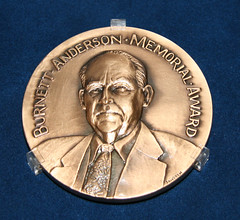 Along the way we've won multiple awards including the Burnett Anderson Memorial Award for Excellence in Numismatic Writing and back-to-back First Place awards in the electronic category of the American Numismatic Association's Barbara J. Gregory Outstanding Club Publications competition on 2021 and 2022.
Along the way we've won multiple awards including the Burnett Anderson Memorial Award for Excellence in Numismatic Writing and back-to-back First Place awards in the electronic category of the American Numismatic Association's Barbara J. Gregory Outstanding Club Publications competition on 2021 and 2022.
Despite the work that goes into each issue, it's always fun to put together. Our readers and fine advertisers are what keep me going - you folks are the best any editor could dream for. It's been a great 24 years, and we're not done growing and evolving. Thanks for all your kind words and support.
For other reader comments, or to read our online archive, see:
http://e-sylum.org/
WORKMAN'S BOOKS ANNOUNCES FIFTH BID SALE
Alan Workman has a new website and his latest sale is open for registration. -Editor
Workman's Books has published a new website that is being hosted through the online payment company Square. In an effort to modernize our website and to provide a better shopping experience, Workman's Books has chosen to develop and stock a new website. The new site will provide better organization, better search capabilities, better item photo hosting, and will provide for a better experience for users of mobile devices. Eventually, all inventory will be moved over to the new site. As of this announcement, only new acquisitions are being listed for sale. Following the end of our October sale, site updates featuring new inventory will resume so stay tuned to your inbox for future update announcements.
Workman's Books is announcing our upcoming Fifth sale and Part III of Selections from the library of long-time dealer, collector, and author, Holland Wallace. The sale will include rare, vintage, and out-of-print numismatic books, auction sale catalogs, dealer fixed price lists, and numismatic journals with subject matter focusing on the United States, Canada, Mexico, Central & South America, Europe, Portugal, Spain, Spanish colonial, Islamic, and Asian numismatics. The selections for this sale include important works and sales by Album, Bailey, Breton, Bruns, Burzio, Calbeto, Calico, Cayon, Chapman, Christie's, Christensen, Douglas, Elder, Ferrari, Gadoury, Glendining, Grove, Leroux, Low, Medina, Ponterio, Pradeau, Pridmore, Prober, Schulman, Sellschopp, Sotheby's, Stack's, Superior, and many others. Accompanying the Wallace library will be a large collection of vintage and rare books, auction catalogs, magazines, maps, and ephemera on shipwrecks, sunken treasure, lost treasure, treasure hunting, lost mines, and treasure in the American West.
This bid sale is being held through the online venue iCollector, and all registrations, approvals, and bids will be handled there. For this bid sale the lots will be closing on a timed interval with extensions of 1 minute for any bids placed within 1 minute of closing. If you already have an iCollector account, you still must "GET APPROVED" to bid for each sale by entering and confirming your information for this bid sale, like reviewing your shipping information and choosing your preferred way of payment. Remember, tie bids go to the earliest bidders, so don't wait for the lots to close to bid on anything for which you have a strict number in mind.
Now is the perfect time to register for the bid sale, as any registration issues can certainly be accommodated more easily in advance. Do not wait to register on the last day. Registration and bidding online are always FREE (no extra fees or percentages for bidding online). Once you are registered and automatically approved, first be sure to bookmark the items that interest you.
To go to the sale, see:
Selections from the Holland Wallace Library Part III and other Consignments Sale 5
(https://www.icollector.com/Selections-from-the-Holland-Wallace-Library-Part-III-and-other-Consignments-Sale-5_as83995)
To view new offerings and visit the website:
https://workmansbooks.square.site/
NEW BOOK: MEGA RED 8TH EDITION
Dennis Tucker forwarded this press release on the new edition of MEGA RED, the pumped-up edition of the Red Book. Thanks! -Editor
OddU.S. Coins are Featured in
Whitman Publishing's New 8th Edition of MEGA RED
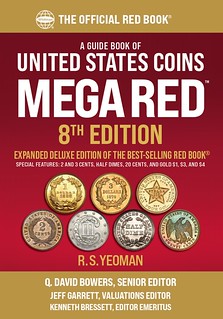 The eighth edition of MEGA RED (the Deluxe Edition of the Guide Book
of United States Coins) made its coin-show debut at the 2022 American Numismatic Association
World's Fair of Money. The 1,504-page MEGA RED can now be ordered online (including at
Whitman.com) and is available from booksellers and hobby shops nationwide.
The eighth edition of MEGA RED (the Deluxe Edition of the Guide Book
of United States Coins) made its coin-show debut at the 2022 American Numismatic Association
World's Fair of Money. The 1,504-page MEGA RED can now be ordered online (including at
Whitman.com) and is available from booksellers and hobby shops nationwide.
Every U.S. coinage series has been updated and revised in the eighth edition. The book includes nearly 300 pages of expanded study of two-cent pieces, copper-nickel three-cent pieces, silver trimes, half dimes, twenty-cent pieces, and $1, $3, and $4 gold coins.
More than a dozen appendices explore specialized subjects such as patterns, error and misstruck
coins, and counterstamped coins of the featured types. One 19-page appendix, based on the work
of James A. Haxby and Harvey B. Richer, studies Canadian half dimes
(five-cent silver coins)
and twenty-cent pieces and their relation to United States coinage. William Bierly, author of In
God We Trust: The American Civil War, Money, Banking, and Religion, contributed an appendix
on pattern two-cent pieces.
Billed as the biggest, most useful Red Book ever,
MEGA RED measures 7 x 10 inches and has
1,040 more pages than the regular edition. The larger size and increased page count combined
make MEGA RED five times bigger than the regular-edition Red Book. It prices more than 9,000
items in up to 13 grades each, with 50,000 individual values and more than 15,000 auction
records covering circulated, Mint State, and Proof coinage. The book is illustrated with
thousands of full-color images, including hundreds that are new to this edition.
MEGA RED covers American coinage from New England colonial times to the modern day— half cents through $20 gold double eagles, plus bullion, commemoratives, Proof and Mint sets, error coins, significant tokens and medals, coins struck by the United States for the Philippines (1903–1945), and other numismatic collectibles. It follows the basic structure of the regular- edition Red Book, but each chapter is dramatically expanded with more historical information, more die varieties, detailed grading instructions with enlarged full-color illustrations, specialized advice on strike characteristics and other technical details, market analysis, auction data, and guidance on collecting and investing in rare coins.
Q. David Bowers is the book's Senior Editor. Jeff Garrett is its Valuations Editor. Kenneth
Bressett serves as Editor Emeritus. A richly illustrated 83-page introduction, The History of
Coins in America, 1607 to Date,
is the work of Bowers. More than 120 numismatists have
contributed research, photographs, market analysis, and other valuable knowledge and resources.
The eighth edition of MEGA RED includes a study of Chinese counterfeit coins by Beth
Deisher, and a 2022 Coin Market Report by Jeff Garrett. Jeff Shevlin and Bill Hyder contributed
an illustrated appendix on So-Called Dollars, with a focus on medals of the 1893 World's
Columbian Exposition. An in-depth 24-page appendix on American Arts Gold Medallions is the
work of Dennis Tucker.
Each year's new MEGA RED features an expanded focus on one or more coin series. The first edition included a 364-page section on copper half cents and large cents, with images, history, diagnostics, and pricing for 832 die varieties, 1793–1857. The second edition featured 330 pages covering 607 varieties of Flying Eagle, Indian Head, and Lincoln cents, 1856 to date. The third edition's feature was on nickel five-cent pieces—Shield nickels, Liberty Head nickels, Buffalo nickels, and Jefferson nickels—covering 545 varieties in 314 pages. Other editions have studied dimes, quarter dollars, half dollars, and silver and related dollars.
For federal coins, detailed charts show each mintage; a summary of certified population data; average national retail prices in grades ranging from About Good to high Mint State and Proof; and three or more recent auction records for most coins. Enlarged close-ups of die varieties provide visual guidance. Extensive chart notes give the backstories and additional details on significant coins.
MEGA RED: A Guide Book of United States Coins, Deluxe Edition, 8th edition
ISBN 0794849660
1,504 pages, full color, $59.95 retail
By R.S. Yeoman; Senior Editor Q. David Bowers; Valuations Editor Jeff Garrett; Editor Emeritus Kenneth Bressett
NEW BOOK: TYPE TWO DOUBLE EAGLES 1866-1876
This press release discusses the new Fuljenz book on Type Two Double Eagles. -Editor
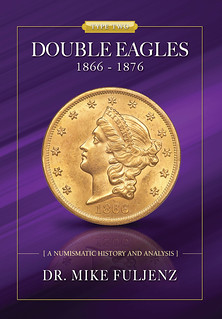 An updated, expanded version is now available of the award-winning United States gold coins reference book, Type Two Double Eagles 1866-1876, a Numismatic History and Analysis, by prominent rare coin dealer and author Dr. Michael Fuljenz.
An updated, expanded version is now available of the award-winning United States gold coins reference book, Type Two Double Eagles 1866-1876, a Numismatic History and Analysis, by prominent rare coin dealer and author Dr. Michael Fuljenz.
At the World's Fair of Money®, the Numismatic Literary Guild honored it as the 2022 Best Investment Book of the Year. It is the second time Fuljenz has been honored with an Investment Book of the Year award on the topic of Type Two Double Eagles.
The Type Two design was the first Double Eagle to include the motto, IN GOD WE TRUST, and is an important part of United States coinage,
said Fuljenz.
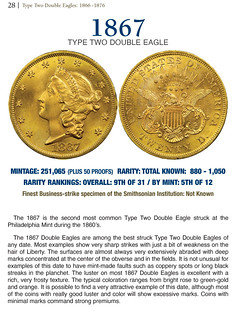 The new, 117-page edition with full-color illustrations of every coin provides collectors with useful information about the 31 different $20 denomination gold business strikes and proofs produced at the Carson City, Philadelphia, and San Francisco mints between 1866 and 1876. It gives easy access to rarity rankings, striking and luster characteristics, eye appeal, and other useful information to build a collection.
The new, 117-page edition with full-color illustrations of every coin provides collectors with useful information about the 31 different $20 denomination gold business strikes and proofs produced at the Carson City, Philadelphia, and San Francisco mints between 1866 and 1876. It gives easy access to rarity rankings, striking and luster characteristics, eye appeal, and other useful information to build a collection.
Readers will learn about the history and development of the Type Two Liberty Head and its design elements, historical price valuations, celebrities who collect these types of coins, what examples are in the National Numismatic Collection at the Smithsonian's National Museum of American History, and tips about how collectors can safely store and protect their coins to avoid theft.
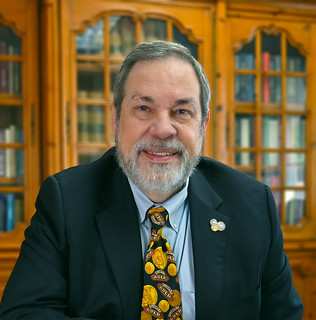 Fuljenz, president of Universal Coin & Bullion (www.UniversalCoin.com) in Beaumont, Texas, includes a consumer protection advisory section about counterfeit Double Eagles produced in China and offered to unsuspecting buyers in the U.S. marketplace.
Fuljenz, president of Universal Coin & Bullion (www.UniversalCoin.com) in Beaumont, Texas, includes a consumer protection advisory section about counterfeit Double Eagles produced in China and offered to unsuspecting buyers in the U.S. marketplace.
There is also information about the IN GOD WE TRUST motto and Peter the Eagle, the bald eagle that lived at the United States Mint in Philadelphia in the 1830s which inspired the eagle design on the reverse of the Double Eagles.
The price for Type Two Double Eagles 1866-1876 is $29.95 postage paid; however, for a limited time, the book can be ordered for only $10 postage paid by using the special discount price code Ray,
(Mike's middle name). A complimentary copy of the book also can be obtained using that code for anyone purchasing a PCGS or NGC-certified gold coin from Universal Coin & Bullion.
For additional information and to order a copy of the book, contact Universal Coin & Bullion at 800-822-4653 or visit online at www.UniversalCoin.com.
NEW BOOK: THE TWENTY CASH COMMENTARY
Michael Zachary submitted this announcement of his new book on the Twenty Cash coins of China. Thanks, and congratulations. -Editor
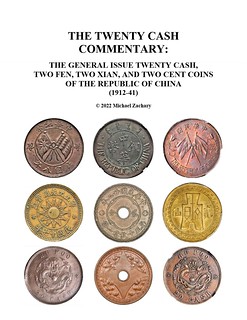 I'd like to announce the publishing of my new guidebook,
I'd like to announce the publishing of my new guidebook, The Twenty Cash Commentary: The General Issue Twenty Cash, Two Fen, Two Xian, and Two Cent Coins of the Republic of China (1912-41),
which is now available on Amazon. The title is a mouthful, but it fully explains the scope of the book, which is 33 pages long. I attach a copy of the book's cover.
As reflected by its title, the guide covers all of the general issue twenty cash, two fen, two xian, and two cent coins of the Republic of China issued from 1912 to 1941, including the dragon restrikes
issued under Republic-era governments. It covers 49 varieties, as compared to the 16 varieties in the Standard Catalog of World Coins. For example, it covers the four varieties of Y-308, the three varieties of Y-308a, the three varieties of Y-312, and the several varieties of each of the Hu-Poo dragon restrikes, Y-5, Y-5.1, and Y-5.2 (and explains the easy way to distinguish Y-5.1 from Y-5.2).
In addition to describing the varieties of the coins that currently can be found in the Standard Catalog, it includes varieties that are not in the Standard Catalog – for example, the varieties with the obverse of Y-308 and the reverse of Y-308a (and vice versa), which previously only could be found in Chinese-language guides. It also covers pattern, fantasy, and private issue twenty cash and two fen coins issued during those years. The detailed text and photographs will allow confident identification of the coins covered by the guide and collectors will hopefully appreciate the background information found throughout the book (the Commentary
mentioned in the title).
This guide is a follow-up to my guide to the general issue ten cash coins, entitled The Ten Cash Commentary: The General Issue Ten Cash Coins of the Republic of China,
which is also available on Amazon.
For more information, or to order, see:
THE TWENTY CASH COMMENTARY: THE GENERAL ISSUE TWENTY CASH, TWO FEN, TWO XIAN, AND TWO CENT COINS OF THE REPUBLIC OF CHINA (1912-41) Paperback – August 27, 2022
(https://www.amazon.com/TWENTY-CASH-COMMENTARY-GENERAL-REPUBLIC/dp/B0BC5ZZTZY/ref=sr_1_1)
The Ten Cash Commentary:: The General Issue Ten Cash Coins of the Republic of China Paperback – February 24, 2015
(https://www.amazon.com/Ten-Cash-Commentary-General-Republic/dp/1508408211/ref=sr_1_1)
BOOK REVIEW: NAVAL AND MARITIME ENGRAVED COINS
Carol Bastable published a book review in the August 2022 issue of the Love Letter, which she edits for the Love Token Society. With permission, we're republishing it here. -Editor
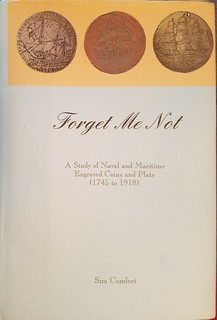 I came across an engraved coin book on eBay about a month ago
and I was quick to purchase it so I could add it to my library of
love token books. I recall a LTS member asking me about a book
previously this year and I think this is the same book. At the
time, when I was described the nature of the book, I thought
that it might have been the prisoner token book that came out
around the millennium. However, the title was different than I
had recalled. I would say this is a new love token reference book,
but it was published back in 2004 in England. Good news sure
travels slowly.
I came across an engraved coin book on eBay about a month ago
and I was quick to purchase it so I could add it to my library of
love token books. I recall a LTS member asking me about a book
previously this year and I think this is the same book. At the
time, when I was described the nature of the book, I thought
that it might have been the prisoner token book that came out
around the millennium. However, the title was different than I
had recalled. I would say this is a new love token reference book,
but it was published back in 2004 in England. Good news sure
travels slowly.
The problem with books sold on the internet is that you cannot
leaf through the pages to see what is included in the book. Upon
reading the description about the book, I learned that there were
140 pieces covered with nearly 300 pages of text and images and
16 pages of color plates. The author Sim Comfort states,
Contained in this octavo volume is the first full study of
maritime engraved coins and all the various types of ships found
in this rare art form. The time span is from the mid 18th to the
beginning of the 20th century. Included are 140 pieces that
depict the great men-of-war during the age of fighting,
Indiamen, privateers, convict ships, slavers and numerous
merchantmen.
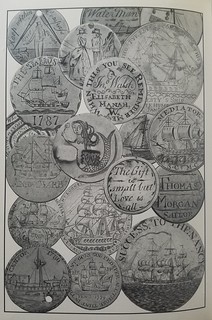 The coins are organized chronologically by the author. Those
that do not bear engraved dates are estimated by a ship's name
or style of a ship. The first engraved coin pictured is dated 1745
and the final coin is the Grand Fleet 1918. I immediately thought
of Fred Schwan and his interest in WWI and WWII engraved
coins. As soon as it arrived in the mail, I was snapping photos
and sending them to Fred. Included were two HMS
Dreadnought engraved coins. After I had Fred sufficiently
salivating with excitement, I then sat down for about three hours
and started reading the book.
The coins are organized chronologically by the author. Those
that do not bear engraved dates are estimated by a ship's name
or style of a ship. The first engraved coin pictured is dated 1745
and the final coin is the Grand Fleet 1918. I immediately thought
of Fred Schwan and his interest in WWI and WWII engraved
coins. As soon as it arrived in the mail, I was snapping photos
and sending them to Fred. Included were two HMS
Dreadnought engraved coins. After I had Fred sufficiently
salivating with excitement, I then sat down for about three hours
and started reading the book.
I love the layout of the book as a reference. Each coin has a header with a few words to describe the coin (ex. Ship's name, battle name, memento mori, anchor, steamship, etc....). Then the obverse and reverse of the coin are pictured below in a nice large size for viewing. Under the coin, in bold text are subheadings of Description, Condition, Background, Nationality, and Date. It is very easy to follow and it is full of history about the ships and people. I love all the coin designs and they are probably easier to view and enjoy in the book than in hand because the one thing about early copper engraved coins is that they can often be very dark and harder to view.
For more information about the Love Token Society, see:
http://lovetokensociety.com/
To read the earlier E-Sylum article, see:
NEW BOOK: NAVAL AND MARITIME ENGRAVED COINS
(https://www.coinbooks.org/v21/esylum_v21n22a09.html)
LANE JERRY BRUNNER (1963-2022)
American Numismatic Biographies author Pete Smith submitted this article on numismatic author and ANA staffer and instructor Lane Brunner. Thanks. Thanks also to David Lisot for passing along the initial announcement from the University of Texas at Tyler, where Brunner was the founding Dean of the College of Pharmacy. -Editor
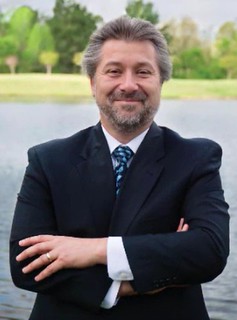 Lane Brunner was born on June 23, 1963. He was married to Molly Ann with three children.
Lane Brunner was born on June 23, 1963. He was married to Molly Ann with three children.
Brunner received a B.S. in Pharmacy from the University of Washington School of pharmacy in 1987. He followed with an M.S. from the University of Texas in 1992 and a PharmD from the University of Georgia in 1995.
He had instructor positions at the University of Houston 1986-1990, University of Georgia 1991- 1993, Medical College of Georgia 1993-1994, and The University of Texas 1994 to 2004.
Brunner joined the ANA in 1982 as member 161378, and in 2003 he converted to ANA life
membership 5681. Brunner taught a class on Coins in the Classroom
during the ANA Summer
Seminar in 2004. On October 4, 2004, he took a position at the ANA as director of numismatic
curriculum and education development. In 2005 he was called numismatic outreach director. On
December 1, 2006, he was promoted to Deputy Executive Director of Museum, Library and
Research Services. He was tasked with developing a proposed American Money and Gold
Museum in the Old San Francisco Mint and another museum in Washington, D.C. Neither was to
come to pass. He departed on June 15 of 2007.
Brunner became the founding dean of the School of Pharmacy at Regis University in 2007-2010. He was then professor at California Northstate College of Pharmacy 2010-2013. In August of 2013, he became the founding dean of the Ben and Maytee Fisch College of Pharmacy at the University of Texas at Tyler.
Along with co-author John M. Frost, he wrote Double Dimes - the United States Twenty-cent Piece published in 2014.
Brunner died on August 31, 2022, following an extended illness.
John Frost submitted this remembrance. Thank you. -Editor
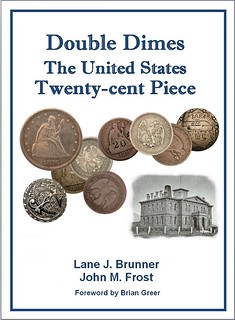 It is with great sadness that I report that my friend and co-author, Lane J. Brunner, has passed away
peacefully on August 31, in the presence of his family. Last fall, Lane was diagnosed with stage four
glioblastoma in his brain. After undergoing radiation and chemotherapy, Lane showed signs of
improvement. I visited him in January, and despite some remaining memory impairment, he looked
comfortable and was happy to see a couple of my latest twenty-cent piece acquisitions.
It is with great sadness that I report that my friend and co-author, Lane J. Brunner, has passed away
peacefully on August 31, in the presence of his family. Last fall, Lane was diagnosed with stage four
glioblastoma in his brain. After undergoing radiation and chemotherapy, Lane showed signs of
improvement. I visited him in January, and despite some remaining memory impairment, he looked
comfortable and was happy to see a couple of my latest twenty-cent piece acquisitions.
Throughout the spring, he made substantial improvement, including significantly decreased edema in the brain and a reduction in tumor size, and messages I received on his progress were guardedly optimistic. We were hopeful that his treatment regimen would result in some extended and quality time. Lane and I were going to get back together to begin work on the Second Edition of our Double Dimes book in January and I was going to visit him later this month to spend a little time with him and make tentative plans. Except for 2021 when I had a mild case of Covid, Lane and I got together every January in Tyler TX for lunch, catching up, and good old double dime coin talk, a highlight of my winter trips.
Unfortunately, a rapid and unexpected downturn in mid-August signaled advancement of the cancer. Lane and his family accepted the inevitable and he entered hospice care. To his family, Lane was Mr. Happy Shiny Guy, as his loving wife Molly put it, the ever optimist.
A celebration of his life was held on Saturday September 3rd, at the University of Texas at Tyler, where Lane was the Founding Dean and a Professor at the College of Pharmacy. Throughout his illness, Lane and his family had great support of his students, faculty, and staff.
His loss will probably hit me the hardest when I resume work on our Second Edition, the project we were looking forward to doing together. And whenever I find some cool twenty-cent piece and want to call him to tell him about it. He was one of those few individuals that I would describe as an R-7. I'll miss him terribly.
My favorite photo is shown below, when Lane (left) and I spent an entire week together immersed
in study of over 700 twenty-cent pieces, combining and organizing our individual research for the
first time. Lane described the week as the Greatest Nerd-fest in the History of Double Dimes.
Thanks also to Barbara Gregory, who passed along articles from The Numismatist with background on his ANA career. See David Lisot's video of Lane's Coin Collecting Basics talk elsewhere in this issue. -Editor
To read the earlier E-Sylum articles, see:
NEW BOOK: DOUBLE DIMES – THE U.S. TWENTY-CENT PIECE
(https://www.coinbooks.org/esylum_v17n31a02.html)
DOUBLE DIMES BOOK ADDENDA AVAILABLE
(https://www.coinbooks.org/esylum_v19n36a07.html)
VIDEO: LANE J. BRUNNER, COIN COLLECTING BASICS
These are selections from the David Lisot Video Library that feature news and personalities from the world of coin collecting. David has been attending coin conventions since 1972 and began videotaping in 1985. The Newman Numismatic Portal now lists all David's videos on their website at:
https://nnp.wustl.edu/library/multimediadetail/522852
Here's Lane Brunner's Coin Collecting Basics talk. See Brunner's obituary elsewhere in this issue. -Editor
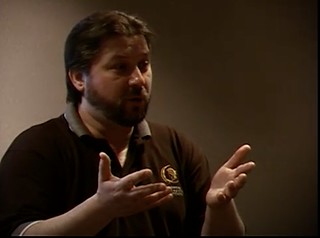 Coin Collecting Basics
Coin Collecting Basics
Speaker: Lane J. Brunner, Ph.D.
Videographer, David Lisot.
Presented at the American Numismatic Association Convention,
Numismatic Theatre, Kansas City, Missouri, 2005.
Length: 39:04
An informative introduction of the many ways to benefit and learn about collecting coins. Presented by Lane Brunner, ANA Education Director, you will learn about: * the meaning of numismatics * coins as a reflection of culture * examples of state quarters and their significance as well as earlier coins and paper money * changes in money brought about by way * importance of condition and grading * history and value, handling and storage, cleaning, and things for which collectors should watch out.
David adds:
"Lane Brunner was a professor at the University of Texas at Tyler and 25-year member of the ANA. He joined the American Numismatic Association in 2004 as Director of Numismatic Curriculum. He eventually became Deputy Executive Director until he returned to academia as a founding dean of the School of Pharmacy for Regis College. He taught numerous numismatic courses, seminars and workshops at ANA conventions, Summer Seminars and at The University of Texas.
"Lane was one the best lecturers I ever videotaped. I was fortunate to be able to get Lane on video discussing multiple numismatic topics many of which can be found on the Newman Numismatic Portal. He presented his ideas in an easy-to-understand manner. He was gentle and knowledgeable. He never lost his love for the coin collecting hobby continuing to go to local coin conventions. He was a friend to all and will be missed. Numismatics has lost one of its great proponents."
An excerpt of the video is available for viewing on the Coin Television YouTube Channel at:
https://nnp.wustl.edu/library/book/557169
VIDEO: SS CENTRAL AMERICA SILVER COINS
The latest addition to the Newman Numismatic Portal is a video of Bob Evans discussing silver coins from the SS Central America. Project Coordinator Len Augsburger provided the following report. -Editor
Silver Coins from the SS Central America
While gold grabs the public mindshare like nothing else, the recovery of silver coins from the most recent SS Central America salvage effort is remarkable in its own right. At the recent ANA convention, Bob Evans spoke to the Liberty Seated Collectors Club on the silver coins recovered from the SS Central America. These pieces survived in amazingly original condition (many were certified by CAC) in what is normally a harsh, corrosive environment for silver objects. Bob explains the science of this surprising preservation and enthusiastically conveys his continued fascination with this bit of American maritime history.
Link to Bob Evans' ANA presentation on NNP:
https://archive.org/details/lscc2022annualmtgpres
FORGING SECRETS BOOK LAUNCH
Louise Boling published an article about the Forging Secrets book launch event at last month's ANA convention in the latest issue of MPC Gram, the newsletter for collectors of Military Payment Certificates and other military numismatica (MPCGram Series 23 No. 2538 3 Sep 2022). With permission, we're republishing it here. Thank you. -Editor
Collectors of military currency celebrated an event of great significance this evening: the release of the book Forging Secrets: Faces and Facts Inside the Nazi Operation Bernard Scheme. The publication of this book marks the culmination of the work of many workers, including several Festers. Among the attendees at this festive event were Festers Steve Feller and Ray Feller, Roger Urce, Dave Frank, Jim Downey, and Danny Spungen, co-authors, Joseph Boling, co-author and general editor, as well as Festers Danah Downey, Neil Shafer, Brian Geise, Louise Boling, Kathy Freeland, and Jeffrey Daniher [Zoom fester].
Others in attendance were Agnes Ohm, Sachsenhausen Concentration Camp Memorial, Curator and Historian and co-author, Debbi Walter, daughter of Hans Walter, co-author, Kiel Majewski, executive director of the Spungen Family Foundation and book publisher, Douglas Mudd, curator of the ANA Money Museum, Joel Shafer, Glen Jorde, Oded Paz, Simcha Kuritzky, and many other luminaries of the numismatic world. Following is a description of the event and the book, taken from the Florence and Laurence Spungen Foundation invitation to the event:
In continuing with a tradition of hosting unique educational events at numismatic gatherings, the Spungen Foundation invites you to celebrate the release of a new book, Forging Secrets, with a dinner event at this year's World's Fair of Money®. Forging Secrets tells the story of Operation Bernhard, the Nazi counterfeiting scheme which used concentration camp prisoners to forge Bank of England notes in an effort to destabilize the British economy during WWII.
This book is one-of-a-kind, both in look and content. It features a die-cut cover, special insert sleeves for Operation Bernhard notes, and sixteen (16) different authors, aided by an army of researchers, translators, and volunteers. Your keynote speakers and panelists for the evening will include Agnes Ohm, Sachsenhausen Concentration Camp Memorial, Curator and Historian; and Debbie Walter, daughter of Hans Walter, one of the forgers of Operation Bernhard.
The evening opened with a rousing performance by Melody Elegy Studio youth choir, with singers from the Chicago Ukrainian community. These young singers gave a fiery performance of the Ukrainian national anthem as well as several other numbers urging support of the Ukrainian people. Funds the choir raises support Revived Soldiers Ukraine, a non-profit dedicated to providing aid to the people of Ukraine and to the medical rehabilitation of Ukrainian soldiers.
(From their website.)
Debbi Walter spoke on growing up with Holocaust survivor and (in)famous forger (and Fester!) Hans Walter, and Agnes Ohm, on Sachsenhausen and Operation Bernard. Finally there was a panel of Agnes Ohm, Debbi Walter, and Joseph Boling, moderated by Kiel Majewski, answering questions from the attendees. Each book is numbered: X of 1000. Book #1 was auctioned with a short but exciting bidding war, and was won by Chris and Sharon Bower, of the Indianapolis Coin Club, with a bid of $500.00, which will support the work of the Spungen Foundation.
To subscribe to the MPC Gram, see: https://guide.us13.list-manage.com/subscribe?u=10eb366ab80344a56657e0d5d&id=58874b37e1 . -Editor
To read the earlier E-Sylum article, see:
NEW BOOK: FORGING SECRETS
(https://www.coinbooks.org/v25/esylum_v25n28a04.html)
NEW BOOK: FORGING SECRETS
(https://www.coinbooks.org/v25/esylum_v25n31a05.html)
INSTITUTE FOR SILVER DOLLAR EDUCATION
These press releases discuss the founding of the new Institute for Silver Dollar Education and Research. I added the Morgan dollar reverse image. -Editor
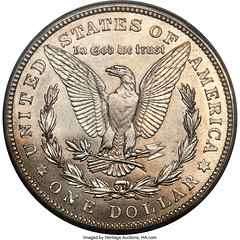 Michael S. Fey, Ph.D., Jeff Oxman, and John Baumgart have formed a new not-for-profit Delaware corporation called,
Michael S. Fey, Ph.D., Jeff Oxman, and John Baumgart have formed a new not-for-profit Delaware corporation called, The Institute for Silver Dollar Education and Research,
(The Institute). It was formed to continue the educational contributions of Leroy Van Allen and A. George Mallis (VAM) during their lifetimes of research and cataloging. The product of these efforts was published in their ground-breaking reference book, The Comprehensive Catalog and Encyclopedia of Morgan and Peace Dollars, along with more than a dozen other volumes dealing with VAM collecting. Ultimately, focus of the Van Allen/Mallis team was to help the public attribute and collect U.S. silver dollars, and that remains the Institute's mission, as well.
An 1896 $1 Silver Certificate (Educational Note) forms the basis of the Institute's new corporate logo, and images of the 2nd U.S. Mint, a Morgan and Peace silver dollar, and the corporate name are all featured in the artwork.
The basis of the Institute's research library is the recent acquisition by Dr. Fey of the Leroy Van Allen Estate, his reference books, coins and library, each of which represents Van Allen's legacy in both research and education about Morgan and Peace dollars. Van Allen, who devoted his entire life to the hobby, cannot easily be replaced, but Dr. Fey has assembled a Who's Who
of Morgan and Peace silver dollar experts to get the Institute off the ground. Fey, Oxman and Baumgart have become the founding Board of Governors and Baumgart is its new Executive Director.
A key function of the Institute will be to attribute new Morgan and Peace dollar varieties, and assign VAM Numbers to all new discoveries. Leroy Van Allen, Bill Fivaz, David Close, M.D., John Roberts, Michael Faraone, Larry Briggs, David Lange and Randy Campbell have volunteered to serve on the Advisory Board. Baumgart will be the chief attributor, and from time-to-time will be relying on one of the above specialists for assistance in determining new Morgan silver dollar varieties and errors, along with correcting VAM book listing mistakes. Dr. Close will do the same for Peace silver dollars.
Robert W. Julian and Roger Burdette have volunteered as co-historians, adding critical knowledge to the history and evolution of Morgan and Peace silver dollars.
Alex Nocerino, a New York lawyer, and knowledgeable VAM dealer, has volunteered to provide general pro bono legal counsel.
Len Augsburger, noted seated specialist and Project coordinator of the Eric P. Newman Numismatic Portal (NNP) at Washington University in St. Louis has offered technical assistance and document repository space in getting nearly two dozen references on the internet.
Several positions in the organization still need filling, and in particular, a knowledgeable silver dollar expert volunteer to help the organization with social media marketing and advertising is being sought. A web domain, Ilovesilverdollars.com
, has been secured and a professional website is being constructed.
In the future, we envision the Institute for Silver Dollar Education and Research as a major supporter of the hobby, and for those who are like-minded, we are seeking your participation.
There are various levels of involvement as a donor: Founding Organization: $5000+ [Gem+ Donor], $1000 min.; $500+ [Gem Donor], $250 [Mint State Donor]: $100 [Circulated Donor], $25 [Friend of the Institute], and lastly, a vintage silver dollar or any other amount [Supporter]. Those organizations and individuals who donate this year will remain on our Founding Donor
webpage as long as the organization exists!
Thank you in advance for your consideration in supporting our efforts to continue Leroy's research and education about silver dollars. Indeed, we believe everyone in the hobby, including the collecting public, dealers, Grading Services, and even Auction Houses have greatly benefited from the efforts of Van Allen and Mallis, and it is our hope to facilitate continuing his legacy into the future. As Dr. Fey has frequently stated, In numismatics, Leroy Van Allen has touched all of our lives in the hobby, and it's safe to say that in the future we all will continue to stand on his shoulders.
the Institute for Silver Dollar Education and Research
Noted Variety collector Bill Fivaz, co-author of the Cherrypickers' Guide donated a box of early historical files and records about Morgan and Peace silver dollars to the Institute of Silver Dollar Education and Research.
According to Dr. Michael S. Fey, The Institute's Chairman, this represents some of the earliest research and development efforts on discovery and frequency of observations of various silver dollar varieties known. Contributions and some personal correspondence by early silver dollar experts in the 1970's included: Leroy Van Allen, A. George Mallis, Pete Bishal, Ted Clark, Randy Campbell, Tom Delorey, Martin Field, Bob Reithe, Hoyt Warren and others. Morgan and Peace Silver dollar variety collectors rest on the shoulders of these pioneers.
In the 1970's Bill Fivaz formed a VAM Club within the Numismatic Error Collectors of American
(NECA), which was a forerunner to the Combined Organization of Numismatic Error Collectors of America (CONECA), with nearly 1000 members today. Along with publisher Leroy Van Allen, and Chairman Randy Campbell, Fivaz contributed 34 VAM Club Reports, published in the NECA Dollar Varieties and Error Scrapbook (1979).
The files will be retained in the Institute's Library for further historical analysis and future publication.
Bill Fivaz is a former American Numismatic Association (ANA) Governor, a Farren Zerbe and Numismatist of the Year awardee, was inducted into the ANA Hall of Fame in 2002, and has an Honorary Doctorate of Numismatics Award.
We'll look forward to hearing more from the new group. -Editor
NOTES FROM E-SYLUM READERS: SEPTEMBER 4, 2022
'Story of Money' Trade Cards List Found
Regarding Steve Woodland's question about the 'Story of Money' Trade Cards,
Julia Casey writes:
"I searched the newspapers and located the advertising campaign for Steve Woodland's Story of Money trade cards. It seemed to have started in most places on January 17, 1921 and was to run for 56 days with a new card each day. There are some outliers though, most notably the October 4, 1921 Seattle Star had an ad from the National Bread Company, which I have attached because it has some elaborate prize details.
"I hit the jackpot with the attached ad in the February 18, 1921 Courier-Journal (Louisville, Kentucky) from the Whiteside Bakery Co. (Betsy Ross Bread-Dixie Tea Biscuits), which contained a list of the 56 cards. And they offered a "bright, new silver dollar" for a complete set!"
The truth is often out there - we just need to find it. Thanks, Julia! -Editor
To read the earlier E-Sylum article, see:
NOTES FROM E-SYLUM READERS: AUGUST 28, 2022 : 'Story of Money' Trade Cards Information Sought
(https://www.coinbooks.org/v25/esylum_v25n35a17.html)
More on Orville "Jim" Grady
Brad Karoleff writes:
"I was sorry to hear of OJ's passing in the last issue of The E-Sylum. I too was one of the multitude of collectors who benefited from the robust group of booksellers who plied their trade in the last couple decades of the 20th century.
"My travels through the mid-west to coin shows during that time period brought me in contact with Orville, soon to be just OJ to me. He always had a display of numismatic literature that caused me to pause at his table for a perusal and conversation. I always came away with a tidbit of knowledge and often a new book, auction catalog or phamphlet for my library. I can't imagine going through the hobby without the access to the numismatic literature that the dealers of the day provided. My favorite tables were often manned by OJ, "Big John" Burns, Charlie Davis and, of course, George Kolbe and David Fanning. I would not be near the numismatist I am today without their help and inventory. You always met the most interesting people at a convention at the booksellers tables. It was a place for meeting the true numismatists of the industry.
"Grady was the "good old boy" of the fraternity. As others have stated, he was not known for having the highest end of literature available for sale but he almost always had something of interest. I collect autographed numismatic literature and would often show up at OJ's table and ask if he had anything "special" for me. One day he produced a dirty, dingy almost disbound catalog for my inspection. I looked at him a little cross-eyed and asked him what was so special about that particular book. He smiled and opened it to an inner page handed it to me and continued to grin. The inscription is illustrated here. I, obviously, had to own that book! I was quoted a number much less than anticipated and closed the purchase.
"I took the book to my binder here in Cincinnati, the Ohio Bookstore, and had them put a new leather cover on the book to preserve it for future generations. It has a place of honor on my bookshelf and is a gentle reminder of a kind and generous member of our fraternity."
Ron Guth writes:
"The news of Orville Grady's passing was sad indeed. Orville was a real gentleman and a pleasure to deal with. In 2017, PCGS purchased the remainder of his inventory of auction catalogs, making PCGS his biggest-ever customer, perhaps not in terms of value but in terms of sheer volume. What I remember most about the transaction was arranging a shipment by semi-truck of 165 heavy boxes from his home to PCGS headquarters in Southern California. The shipping quotes we received were all over the board, with the highest ones exceeding the purchase price for the catalogs."
To read the earlier E-Sylum article, see:
ORVILLE "JIM" GRADY (1944-2022)
(https://www.coinbooks.org/v25/esylum_v25n35a12.html)
ROBERT MEBANE RAMSAY (1913-1996)
Pete Smith submitted this article about National Currency researcher and author Robert M. Ramsay. Thank you! -Editor
This week I get to correct an error in numismatic literature that has existed for 45 years. The co-authors and compilers of National Banks of the United States, 1863-1935 are always listed as Robert M. Ramsey and Robert V. Polito. The first author was actually Robert M. Ramsay.
Robert Ramsay was born on May 27, 1913, in Columbia, Missouri. His parents were an English professor Dr. Robert Lee Ramsay (1880-1953) and Margaret Whitehead Prentis Ramsay (1877-1959. The father published references on Missouri place names.
The son graduated from the University of Missouri. During the Second World War, he served in Alaska with the U. S. Army Air Corps. He married Elsie Irene Bower Ramsay (1917-1990). They had a son and a daughter. He worked for Armstrong Cork Co, first in Camden, New Jersey and later in Lancaster, Pennsylvania.
The ANA was confused about his name. He is listed twenty times in The Numismatist as Ramsay and six times as Ramsey. Ramsay joined the ANA as member 18364 in 1950, living at the time in Paradise, Pennsylvania. In 1954 he was secretary for the Cloister Coin Club. In 1954, The Numismatist published a letter from Robert M Ramsey of Paradise, PA. In 1981, the ANA Library received a copy of National Banks of the United States, 1863-1935, by Robert M. Ramsey and published by Steinmetz Coins and Currency.
In 1975, Ramsey was recognized as a 25-year member. It was Ramsay who was recognized as an
ANA 40-Year member in 1990 and in 2000 as a 50-year member, four years after his death. In
the June 2011 issue of The Numismatist, Ramsay was listed in the In Memoriam
section
without his date of death. By then he had been dead for fifteen years.
Around 1971 he compiled A Tentative Checklist of Spanish-American Bust-Type Silver, published by Hewitt Bros. He was listed as one of many contributors to the Rulau Standard Catalog of United States Tokens 1700-1900.
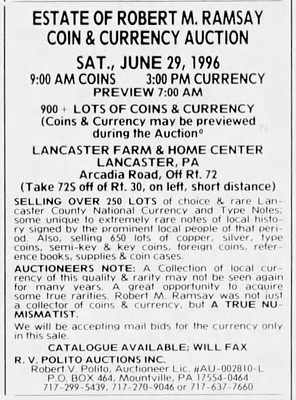 In 1971-72, he conducted auction sales with his mailing address as 253 Paradise Road in
Lancaster. I suspect these catalogs are now scarce.
In 1971-72, he conducted auction sales with his mailing address as 253 Paradise Road in
Lancaster. I suspect these catalogs are now scarce.
By 1974 he had compiled a list of Pennsylvania national banks sorted by county. This was not broadly distributed but offered by request.
Ramsay died on February 29, 1996, at Whitehall-Leader Nursing Center in Lancaster. He is buried at Leacock Presbyterian Cemetery in Lancaster. Dennis E. Steinmetz was executor of the estate.
An estate auction for Robert M. Ramsay was held at the Lancaster Farm and Home Center on June 29, 1996. Coins began at 9:00 AM with currency setting off at 3:00 PM. Robert V. Polito was the auctioneer. I wonder how many copies of the catalog remain in collector's hands.
RED BOOK EDITOR JEFF GARRETT
Kentucky Colonel Dennis Tucker of Whitman Publishing wrote an article on Coin Update about Red Book Editor Jeff Garrett. -Editor
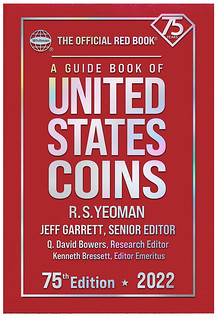 For many decades, starting in the 1930s, the city of Racine, Wisconsin, was home to the numismatic powerhouse of Whitman Publishing—the firm that popularized coin collecting during the Great Depression and World War II, mass-marketed coin boards and coin folders, and created the best-selling Guide Book of United States Coins (the hobby's popular
For many decades, starting in the 1930s, the city of Racine, Wisconsin, was home to the numismatic powerhouse of Whitman Publishing—the firm that popularized coin collecting during the Great Depression and World War II, mass-marketed coin boards and coin folders, and created the best-selling Guide Book of United States Coins (the hobby's popular Red Book
). Later, Whitman was managed in New York City, then for many years, it was headquartered in Atlanta, Georgia, where much of its editorial work still takes place.
And for the past several years, the Red Book has also had a vibrant Kentucky connection.
If you're 76 years young (or younger) and you collect American coins, the Red Book has always been a part of your hobby experience. The first edition was published in 1946, and more than 25 million copies have been sold since then. It's as much a part of the hobby community as coins themselves.
Kenneth Bressett tells the story of Whitman Publishing, and of the man who authored its most famous publication, in his memoir A Penny Saved: R.S. Yeoman and His Remarkable Red Book.
Yeoman spearheaded the volume's creation and was the hobby's first Mr. Red Book.
After Yeoman, with whom he worked starting in 1959, Bressett was the second Mr. Red Book.
He's nurtured the Red Book for more than 60 years, as editor, senior editor, and finally (semi-) retiring as editor emeritus in 2018.
Who took over from Bressett as the third man in 75-plus years to hold the senior-editorial reins of the Red Book? That would be Jeff Garrett of Lexington, Kentucky.
Garrett is no newcomer to the Red Book, or to coins. He's been a life member of the American Numismatic Association since 1975, and served as the association's president from 2015 to 2017. He founded Mid-American Rare Coin Galleries in Lexington in 1984. The firm has been in the same location for more than 30 years. He started the Bluegrass Coin Club in 1994, serves as a consultant to the Smithsonian's National Numismatic Collection, and for many years was the valuations editor of the Red Book.
I've known Jeff Garrett personally and professionally for almost 20 years and have published many of his award-winning books, including 100 Greatest U.S. Coins and the Encyclopedia of U.S. Gold Coins, 1795–1933. I know him not only as a businessman who understands the rare-coin market, but also as a numismatist, a researcher, and writer—someone who likely knows the answer to your coin-related question, or if he doesn't, knows where to find it.
The Bluegrass State can be proud to count Jeff Garrett as one of its most celebrated numismatic sons, just as Whitman Publishing is pleased to have his steady editorial eye on the Red Book.
To read the complete article, see:
From the Colonel's Desk: The Guide Book of United States Coins' Kentucky connection
(https://news.coinupdate.com/from-the-colonels-desk-the-guide-book-of-united-states-coins-kentucky-connection/)
VOCABULARY TERM: LOGOTYPE
Here's another entry from Dick Johnson's Encyclopedia of Coin and Medal Terminology. -Editor
Logotype. A single punch containing more than one figure or letter; a gangpunch. Logotypes are used by engravers or diesinkers for example, to punch the date in coin hubs or dies. Christian Gobrecht first used a 4-digit logotype on the date of his 1836 silver dollar. Use of logotypes.in the engraving department of the United States was a common practice thereafter. Counterstamped pieces have also been stamped with logotypes, sometimes with the effect of raised lettering within a sunken panel. maker's marks are a form of logotype, often composed of a monogram, symbol or trademark and/or name forming the design of the punch, these were often used on edge or the reverse. The famed American Brasher doubloon was punched with a logotype of the issuer's EB initials.
Logotypes are made by cutting the design or letters into a matrix, usually of brass, and by forcing a softened steel punch into the matrix; the punch is shaped much like a pencil point with a long bevel or taper; the punch is then hardened for use. See punch, puncheon (1). Logotype anomalies usually occur when overdating, correcting the date on, say, a previous year's die. Breen records over 60 of these in early U.S. Mint history. The most dramatic are the rotated logotype where the logotype with two figures "18" were first punched in as "81". This occurred on the 1844 and 1851 large cent dies.
References:
NC8 {1988} Breen.
To read the complete entry on the Newman Numismatic Portal, see:
Logotype
(https://nnp.wustl.edu/library/dictionarydetail/516242)
THE BUSINESS OF NUMISMATICS IN 2022
Last week we discussed Jeff Garrett's article on the billionaire collectors in today's red-hot numismatic market. Is the market showing signs of cooling? Patrick Ian Perez discusses the current numismatic marketplace in a September 2022 Greysheet column. Here's an excerpt. -Editor
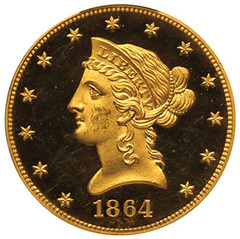 One thing that stands out to me as of late is the seemingly-unending announcements of very rare and important items coming to market in the near and long-term future. While it is true that in every calendar year there are landmark collections and important individual pieces sold, during the past 15 months—and the coming six months—there have been a tremendous amount of rare United States coins changing hands. The rare coin market has cooled off a bit over the past three months, in concert with the wider global economy, but owners of valuable numismatic material are still willing to consign to auction.
One thing that stands out to me as of late is the seemingly-unending announcements of very rare and important items coming to market in the near and long-term future. While it is true that in every calendar year there are landmark collections and important individual pieces sold, during the past 15 months—and the coming six months—there have been a tremendous amount of rare United States coins changing hands. The rare coin market has cooled off a bit over the past three months, in concert with the wider global economy, but owners of valuable numismatic material are still willing to consign to auction.
This may be considered two ways: 1) we are witnessing a running for the exits
scenario, in which sellers are concerned that demand and prices will continue to soften and selling now will yield more than later; or 2) sellers are plenty happy with the appreciation in value of their holdings and it is simply the time to sell as part of normal investment/portfolio management.
Most of the important material that is selling in the near future (or already sold by the time this issue is printed and mailed) are coins that have been off the market for a very long time. Additionally, there is the ongoing sale of The Fairmont Collection, which has been a tremendous source of scarce date and high-grade gold coinage. The Stack's Bowers August 2022 Global Showcase auction features another run of half eagles, eagles, and double eagles from this massive collection. The same sale features the Mocatta Collection, which includes amazing mint state and proof gold coinage, including both Wire Edge and Rolled Edge $10 Indians, an 1864 Proof $10 in PCGS PR65DCAM, and an 1887 Proof $20 in PCGS/CAC PR65DCAM. For me, the clear standout of this collection is the 1825/4/1 Proof Half Eagle, graded PCGS/CAC PR67CAM. The last public appearance of this coin was in the Palace Collections of Egypt (the Farouk sale) in 1954.
I find it surprising that there has yet to be a coin sold for greater than $2 million in this calendar year. In 2021, this happened with regularity. The closest sale to that so far was the $1.8 million paid for the 1861 Proof Double Eagle in January. Certainly the 1825 Proof Half Eagle has the best shot to break through this level.
To read the complete article, see:
The Business of Numismatics: September 2022 Greysheet
(https://www.greysheet.com/news/story/the-business-of-numismatics-september-2022-greysheet)
To read the earlier E-Sylum article, see:
THE STRATOSPHERE OF NUMISMATICS
(https://www.coinbooks.org/v25/esylum_v25n35a20.html)
THE BOOK BAZARRE
NUMISMAGRAM KARL GOETZ MEDALS
Jeremy Bostwick of Numismagram passed along these highlights from his recent upload of new medals to his site, with all of the medals being from the hand of famed medalist Karl Goetz. A number of these focus upon events during or shortly after the conclusion of World War I, with some even having a tie-in to the United States. For all of the new items from this month, please visit numismagram.com/inventory. -Editor
102044 | GERMANY & EUROPE. The Russian Ambassador receives the Serbian Assassin cast bronze Medal. Dated 1914, though likely a later casting. "Serajewo/Der Funke des Weltbrandes"—on the spark of the global conflagration (57mm, 57.09 g, 12h). By K. Goetz in München. DER RVSS GESANDTE VON HARTWIG EMPFÄNGT SERB MÖRDER, Russian ambassador Hartwig standing left, receiving Serbian assassins and presenting them with a bag of money / DER FVNKE DES WELT-BRANDES, assassin advancing on a road to Sarajevo, holding bomb behind back. Edge: Plain. Kienast 132; Klose 1.1; Art of Devastation p. 81, fig. 5. Mint State Details. Deeper brown surfaces, though a few spots of corrosion are noted. An important and scarce issue recounting the events leading up to what would cause the first of the two great world wars. $495.
Starting merely as a local issue between Austrian-dominated Serbia and the Russian Empire (who wished to have greater influence in the Balkans), World War I escalated upon the assassination of the Austro-Hungarian crown prince, Franz Ferdinand, along with his wife Sophie in the streets of Sarajevo in 1914. Conducted by Serbians who were members of the Black Hand, this caused Austria to punish Serbia, with Russia then coming to the aid of Serbia. In turn, Germany's decades-old alliance with Austria brought her into the conflict against Russia, with France and Great Britain (owing to their own alliance with Russia) in against Germany and Austria. Through numerous alliances, this Balkan issue quickly spiraled into the largest conflict then seen by the world.
To read the complete item description, see:
102044 | GERMANY. Russian Ambassador receives Serbian Assassin bronze Medal.
(https://www.numismagram.com/product-page/102044)
102076 | GERMANY & GREAT BRITAIN. Alfred, Lord Northcliffe cast iron Medal. Dated 1914. "Englische Hetzpresse"—on the hateful English press (57mm, 53.39 g, 12h). By K. Goetz in München. NORTHCLIFFE, half-length figure of Northcliffe facing slightly right, sharpening his quill upon whetstone; frog below right hand, inkwell to lower right / DER BEARBEITER DER ENGLISCH•VOLKS SEELE (the editor of the minds of the English), the devil, holding torch and newspapers, seated upon the globe which he sets ablaze. Edge: Some filing marks as made. Kienast 150; Klose –; Art of Devastation –. Choice Mint State. Deep charcoal-gray surfaces, with some lighter hues around the devices. Ex Leigh Park Collection. $465.
Northcliffe at the time owned the world's largest newspaper chain, and here Goetz alludes to him molding English public opinion, fanning the flames against Germany, and using his pen (archaically represented by a quill) as a sharpened blade. In addition to acquiring the Evening News in 1894, he founded the Daily Mail in 1896 and the Daily Mirror in 1903, and also acquired the Weekly Dispatch in the same year. He owned The Observer from 1905-1911 as well as The Times from 1908-1922.
To read the complete item description, see:
102076 | GERMANY. Alfred, Lord Northcliffe cast iron Medal.
(https://www.numismagram.com/product-page/102076)
102045 | GERMANY & UNITED STATES. America's Peace Terms cast bronze Medal. Dated 1918. "Wilsons Botschaft, Die 14 Punkte"—on the occasion of President Wilson's "Fourteen Points" speech before a joint session of Congress (57mm, 76.51 g, 12h). By K. Goetz in München. WILSON'S BOTSCHAFT, half-length figure of Woodrow Wilson reaching over globe, pointing to tablet inscribed with fourteen points / WELTFRIEDENS PROGRAMM (world peace program), eagle with wings spread, grasping in claws tablet inscribed with four additional points; scales behind, five orbs of fire raining from above. Edge: Plain. Kienast 203; Klose –; Art of Devastation p. 276, fig. 71. Choice Mint State. Olive-brown surfaces. $495.
On 8 January 1918, Woodrow Wilson delivered a speech to Congress in which he outlined his Fourteen Points, a post-war plan for peace in Europe. Allies widely distributed copies of the speech behind German lines to encourage Germany to surrender, with the expectation that fair terms would be reached. The terms of surrender ultimately changed, however, and called for crushing penalties that shocked Germans and inspired Goetz to create this satirical medal.
To read the complete item description, see:
102045 | GERMANY. America's Peace Terms cast bronze Medal
(https://www.numismagram.com/product-page/102045)
102073 | GERMANY, GREAT BRITAIN, the NETHERLANDS & UNITED STATES. Shortage of Shipping Tonnage cast iron Medal. Dated 1918. "Holländischen Schiffsraub"—on the taking of Dutch ships by the United States (57mm, 58.24 g, 12h). By K. Goetz in München. Uncle Sam (representing the United States) and John Bull (representing the United Kingdom) advancing left across carpet of tulips (representing the Netherlands) and carrying ships under their arms (one of which is named Hollandia); seascape in background, windmill at a distance / NOT LEHRTSTEHLEN (necessity is the teacher of stealing), various steam and sailing ships upon the sea. Edge: Some filing marks as made, otherwise plain. Kienast 210; Klose 12.25; Art of Devastation p. 278, fig. 73. Choice Mint State. Gray-brown surfaces, with some hints of red around some of the devices. Ex Leigh Park Collection. $435.
Following the entry of the United States into the war, there was an immediate need for shipping a great deal of resources and troops to the frontlines in Europe. To make up for this immense necessity, President Wilson ordered the seizure of Dutch vessels in American ports, citing the right of angary—an international law, and an aspect that further angered the Germans.
To read the complete item description, see:
102073 | GERMANY. Shortage of Shipping Tonnage cast iron Medal.
(https://www.numismagram.com/product-page/102073)
ARCHIVES INTERNATIONAL AUCTION 79 HIGHLIGHTS
Here are some highlights of the Archives International Auctions sale closing September 6, 2022. Some interesting items here. -Editor
Lot 62: 1945 Central Bank of China Specimen
China, 1945. 1000 Yuan, P-289s (It is a Color Trial but incorrectly attributed) S/M#C300-265, Specimen banknote, Reddish Brown, S/N 1-A 000000, Top right margin has printed in small red letters " DB3-LB1-9-16-45" which refers to the order number and shade selection as well as date printed. PMG graded Superb Gem Uncirculated 68 EPQ. Printer: SBNC. This is the highest graded example either as a Specimen or Color Trial Specimen in the PMG census
To read the complete lot description, see:
Central Bank of China, 1945 "Top Pop" Color Trial Specimen Banknote
(https://auction.archivesinternational.com/Central-Bank-of-China-1945-Top-Pop-Color-Trial-Specimen-Banknote_i46026926)
Lot 140: 1975 Falkland Islands 10 Pounds
Falkland Islands/British Administration, 1975. 10 Pounds, P-11a, Issued banknote, Green on multicolor underprint, S/N A03742, PMG graded Superb Gem Uncirculated 67 EPQ. Printer: TDLR. Tied for highest graded out of 54 graded in the PMG census. Attractive and desirable note.I've always been partial to Falkland Islands currency. -Editor
To read the complete lot description, see:
Government of the Falkland Islands, 1975 "Top Pop" Issued Banknote
(https://auction.archivesinternational.com/Government-of-the-Falkland-Islands-1975-Top-Pop-Issued-Banknote_i46027004)
Lot 162: 1938 French Somaliland 500 Francs
French Somaliland, 1938. 500 Francs - Djibouti, P-9b, Issued banknote, Brown on multicolor underprint, S/N A.3 252, Sign. Titles - Pres. - Dir. Gen, PMG graded Choice Uncirculated 64.A pleasant note. -Editor
To read the complete lot description, see:
Banque de l'Indo-Chine, 1938 Issued Banknote
(https://auction.archivesinternational.com/Banque-de-l-Indo-Chine-1938-Issued-Banknote_i46027026)
Lot 288: Mali Banknote 10,000 Francs
Mali, ND(1970-84). 10,000 Francs, P-15f, Issued Banknote, M/c printing with man at left and building at right, S/N K.6 49201, PMG graded Choice Uncirculated 64 with comment "annotations."A nice design with great colors. -Editor
To read the complete lot description, see:
Banque Centrale du Mali, ND(1970-84), Issued Banknote
(https://auction.archivesinternational.com/Banque-Centrale-du-Mali-ND-1970-84-Issued-Banknote_i46027152)
Lot 270: American Colonization Society Exchange Document
Liberia and Washington, D.C., 1861. $350 I/U Second Exchange document from the Treasury Department of Monrovia (Liberia), S/N 75, issued to William McLain, Financial Secretary of the American Colonization Society, Black text with thin border on blue paper, VF condition. Signed by Stephen A. Benson as President of the Republic of Liberia at left, as well as John B. Jordan as Secretary of the Treasury at bottom right, and mentions Asbury F. Johns in the text. This piece was issued the year before the United States recognized Liberia as a country. Stephen Allen Benson (1816-1865) served as the 2nd President of Liberia from 1856 to 1864. Prior to that, he was the 3rd Vice President of Liberia from 1854 to 1856 under President Joseph Jenkins Roberts.Although born in the United States, Benson was the first president to have lived in Liberia since childhood, he and his family having arrived with the first groups of settlers in 1822. John Bradberry Jordan (1817-1852) was born as a slave in New Orleans in 1817. Jordan's freedom was granted upon his master's death, and he emigrated to Liberia in 1852. Jordan established a sugarcane farm, purchasing a steam mill in 1857 and becoming a prosperous farmer. He served as Liberia's Secretary of the Treasury in President Benson's administration, until his death in 1862. Asbury F. Johns was born in Maryland around 1820, and he immigrated to Liberia in 1852. He became one of the wealthiest merchants in Liberia and became involved in politics, serving as Liberia's Treasurer under several presidents.
Liberia began in the early 19th century as a project of the American Colonization Society (ACS), which believed black people would face better chances for freedom and prosperity in Africa than in the United States. The African-American community and abolitionist movement overwhelmingly opposed the project. In most cases, African Americans' families had lived in the United States for generations, and their prevailing sentiment was that they were no more African than white Americans were European. Contrary to stated claims that emigration was voluntary, many African Americans, both free and enslaved, were pressured into emigrating. Indeed, enslavers sometimes manumitted their slaves on condition that the freedmen leave the country immediately. Rare piece of history from a controversial movement in America.
Fascinating chapter in American history. -Editor
To read the complete lot description, see:
Liberian Treasury Department, American Colonization Society, 1861 I/U Second Exchange
(https://auction.archivesinternational.com/Liberian-Treasury-Department-American-Colonization-Society-1861-I-U-Second-Exchange_i46027134)
Lot 243: 1951 Italian Somaliland 5 Somali
Italian Somaliland, 1951. 5 Somali, P-16, Issued Banknote, Brown-violet and light blue printing with Leopard at center, S/N A010 054982, PCGS graded Gem New 66 PPQ.I'd never seen one of these before. -Editor
To read the complete lot description, see:
Italian Somaliland - Cassa per la Circolazione Monetaria della Somalia, 1951, High Grade Issued Bank
(https://auction.archivesinternational.com/Italian-Somaliland-Cassa-per-la-Circolazione-Monetaria-della-Somalia-1951-High-Grade-Issued-Bank_i46027107)
Lot 442: 1753 Pennsylvania Land Deed
New Britain, Bucks County, Pennsylvania, 1753. Ornate handwritten land deed on vellum, measuring approximately 29.5 inches x 9.5 inches, with a pair of red wax seals near signatures at bottom center and bottom right. This document outlines the terms and sale of 36 acres of land for the sum of 100 Pounds Pennsylvania currency, sold by Simon Mathews to his son Edward Mathews. Provides an extremely detailed description of the location of the 36 acres, stating that it is near Simon Butler's land "north west fifteen perches to a red oak tree" and that the land was once a "part of a tract of land containing one hundred and sixty seven acres" belonging to James Steel and his wife Martha of Philadelphia. VF condition with some toning and small holes, still in remarkable condition for its age.Simon Mathews (died 1755) was a Welsh immigrant who came to Pennsylvania with his cousin Simon Butler in 1712. Along with Butler, he is considered one of the founding fathers of Chalfont, Pennsylvania. In 1720, he moved to the New Britain area of Bucks County with Butler, who had already established himself in the area. In 1731, he bought 147 acres of land and built a home. His farmhouse still stands today and is a wedding venue. He died in 1755 and his estate was bequeathed to his son Thomas. He fathered many children and his descendants are still in the area.
Simon Butler, Mathews' cousin, was also an important historical figure of the area. In 1720, he purchased 176 acres of land that included much of the then-standing "Village of Chalfont" from a former land grant founded by William Penn. In 1730, he finished construction of his house and mill and then purchased over 400 acres of land in 1745 including much of present- day Chalfont and New Britain. During this time, Butler built a number of gristmills on the sites of original mills, such as the Funk sawmill and the Shellenberger's mill. He then acted as the sole justice of the peace in the county, and until his death he was the economic and legal power in the area. Among other important duties he wrote wills and was well known for his extremely sound judgement. Rare and unique historical document from founding figures in Pennsylvania colonial history.
Interesting colonial history item. -Editor
To read the complete lot description, see:
Pennsylvania Land Deed, 1753 Signed by Simon Mathews, One of the Founding Fathers of Chalfont, PA.
(https://auction.archivesinternational.com/Pennsylvania-Land-Deed-1753-Signed-by-Simon-Mathews-One-of-the-Founding-Fathers-of-Chalfont-PA_i46027306)
Lot 553: Atlanta Braves Stock Certificate
Atlanta, Georgia. (ca.1960's-70's). Odd Shares. Specimen stock certificate. Politically incorrect Laughing Native American Indian on top of title with undertint of large baseball in middle. Red specimen overprint and POC's. Choice uncirculated condition. Rare and popular baseball certificate. ABNC.
To read the complete lot description, see:
Atlanta Braves, Inc. ca.1960-70's Specimen Stock Certificate.
(https://auction.archivesinternational.com/Atlanta-Braves-Inc-ca-1960-70-s-Specimen-Stock-Certificate_i46027397)
Lot 603: Hayden Planetarium Bond
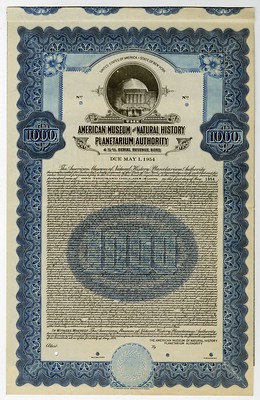 New York, 1934. $1000 Specimen 4.5% Serial Revenue Coupon Bond, Black text with blue border
and underprint, Hayden Planetarium depicted at top center. POCs throughout, VF condition, HBN.
The original Hayden Planetarium was founded in 1933 with a donation by philanthropist Charles
Hayden. The Hayden Planetarium, designed by architects Trowbridge & Livingston, opened In 1935.
In January 1997, the original Hayden Planetarium was closed and demolished. On February 19,
2000, the $210 million Frederick Phineas and Sandra Priest Rose Center for Earth and Space,
containing the new Hayden Planetarium, opened to the public. Neil deGrasse Tyson is its first and,
to date, only director. This bond was issued in the 4th year of the Authority's existence. This is the
second of only 2 examples found of this variety in the ABN Archives.
New York, 1934. $1000 Specimen 4.5% Serial Revenue Coupon Bond, Black text with blue border
and underprint, Hayden Planetarium depicted at top center. POCs throughout, VF condition, HBN.
The original Hayden Planetarium was founded in 1933 with a donation by philanthropist Charles
Hayden. The Hayden Planetarium, designed by architects Trowbridge & Livingston, opened In 1935.
In January 1997, the original Hayden Planetarium was closed and demolished. On February 19,
2000, the $210 million Frederick Phineas and Sandra Priest Rose Center for Earth and Space,
containing the new Hayden Planetarium, opened to the public. Neil deGrasse Tyson is its first and,
to date, only director. This bond was issued in the 4th year of the Authority's existence. This is the
second of only 2 examples found of this variety in the ABN Archives.
To read the complete lot description, see:
American Museum of Natural History Planetarium Authority, 1934 Specimen Bond Rarity
(https://auction.archivesinternational.com/American-Museum-of-Natural-History-Planetarium-Authority-1934-Specimen-Bond-Rarity_i46027467)
For more information, see:
https://archivesinternational.com/
WORLD BANKNOTE AUCTIONS SALE 31 HIGHLIGHTS
Here are some highlights of the upcoming World Banknote Auctions Auction 31. -Editor
World Banknote Auctions has now launched Live Sale 31 at www.worldbanknoteauctions.com. Live Sale 31 starts on September 15, 2022, with live bidding that day at 1 PM Eastern / 10 AM Pacific. Please note that Sale 31 is divided in two parts, each selling on a different day. The first live sale with 527 lots takes place on September 15 at 10 AM PST. The second timed sale with 731 lots closes on September 18 at 3 PM PST (special bidding rules apply for the timed sale, please see our website for details). Our bidding platform can be accessed directly by going to bid.worldbanknoteauctions.com or through our mobile apps.
Lot 31026: 2021 Azerbaijan 500 Manat
Azerbaijan 2021 P-43a PMG Superb Gem UNC 67 EPQ 500 Manat
Commemorative issue. High denomination modern type with a face value of almost 300 US Dollars.
To read the complete lot description, see:
Azerbaijan 2021 P-43a PMG Superb Gem UNC 67 EPQ 500 Manat
(https://bid.worldbanknoteauctions.com/lots/view/4-73DQGC/azerbaijan-2021-p-43a-pmg-superb-gem-unc-67-epq-500-manat)
Lot 31324: 1942 Malaya 50 Dollars
Malaya 1942 (ND 1945) P-14 PMG Very Fine 25 50 Dollars (A/1 Prefix)
A nice, problem-free example of this popular type. As a bonus, it comes with the first prefix, which increased desirability. Good paper quality and nothing but problem-free circulation are noteworthy. Most importantly, it is free from repairs typically seen on this large-format note.
To read the complete lot description, see:
Malaya 1942 (ND 1945) P-14 PMG Very Fine 25 50 Dollars (A/1 Prefix)
(https://bid.worldbanknoteauctions.com/lots/view/4-73DQWX/malaya-1942-nd-1945-p-14-pmg-very-fine-25-50-dollars-a1-prefix)
Lot 31392: 1998 Philippines 100,000 Piso
Philippines 1998 P-190a PCGS Superb Gem UNC 68 PPQ 100,000 Piso
A grand banknote in both size and face value, and as always extremely popular with collectors. Tied for finest in the PCGS population report. PCGS population in 68 PPQ: 4 (0 Finer)
To read the complete lot description, see:
Philippines 1998 P-190a PCGS Superb Gem UNC 68 PPQ 100,000 Piso
(https://bid.worldbanknoteauctions.com/lots/view/4-73DR0Y/philippines-1998-p-190a-pcgs-superb-gem-unc-68-ppq-100-000-piso)
Lot 31433: 2007 Saudi Arabia 500 Riyals Specimen
Saudi Arabia 2007 / AH1428 P-36as PMG Gem UNC 66 EPQ 500 Riyals (Specimen)
The final lot in our extremely rare Saudi Arabia 2007 specimen set. This is the highest denomination in the now obsolete 2007 series and a type that is very popular in any form. In specimen form it is very seldom seen, and this is the first such set we have been able to offer. It certainly is not an offering we expect to repeat anytime soon. We must note that a partial set was offered by another auction house, but to the best of our knowledge this is the first time a complete specimen set of this issue has been offered at public auction.
To read the complete lot description, see:
Saudi Arabia 2007 / AH1428 P-36as PMG Gem UNC 66 EPQ 500 Riyals (Specimen)
(https://bid.worldbanknoteauctions.com/lots/view/4-73DR3A/saudi-arabia-2007-ah1428-p-36as-pmg-gem-unc-66-epq-500-riyals-specimen)
Lot 31511: Vietnam 1000 Dong Specimen
Vietnam - South ND (1955-56) P-4As PMG Choice UNC 64 1000 Dong (Specimen)
Variety without red control number. Always a popular type. Even though this type (which was never issued for circulation and only exists in specimen and proof format) has become more available recently available examples remain popular as collectors now have more access to this iconic type than ever before. This is a nice choice uncirculated example that was recently graded by PMG.
To read the complete lot description, see:
Vietnam - South ND (1955-56) P-4As PMG Choice UNC 64 1000 Dong (Specimen)
(https://bid.worldbanknoteauctions.com/lots/view/4-73DR7N/vietnam-south-nd-1955-56-p-4as-pmg-choice-unc-64-1000-dong-specimen)
SOVEREIGN RARITIES SEPTEMBER 2022 SALE
Here's the press release for the Sovereign Rarities sale on September 21, 2022. -Editor
Sovereign Rarities are pleased to present to the numismatic community their seventh auction - taking place on 21st September 2022 - consisting of 360 lots of Ancient, British and World Coins and Commemorative Medals. The sale features a superb run of ancient, world and British offerings, and pre-bidding will open within the next month at www.sovr.co.uk until the live auction on the day.
Lot 37, Kingdom of Macedon, Perseus, silver Tetradrachm, c. 179-168 BC, ex. Lockett
Lot 38, Thrace, Maroneia, silver Stater, c. 380 BC
Lot 52, Corinth, silver Stater, 405-345 BC
The sale begins with lots 1-114, ‘Selected coins from the Property of an English Gentleman', an impressive run of ancient coins tracking the progression of art in the ancient Greek and Roman world. Many of these pieces have been off the market for decades and boast impressive provenances. Lot 37, a Tetradrachm of Perseus struck c.179-168 BC, was part of the celebrated Lockett collection dispersed in 1958. The next lot, 38, is a silver Stater of Thrace, Maroneia, struck around 380 BC. This piece is beautifully toned, as is lot 52, an exquisite Corinthian Stater struck 405-345 BC.
Lot 148, Kingdom of Macedon, Alexander III, gold Distater, 336-323 B.C., Ch XF 5/5, 3/5 NGC
The collection runs through many of the major eras and regions in the ancient world, including Athens, Syracuse, Bactria, Judea, Rome, and electrum staters of Lydia. The Property of a Gentleman concludes with some miscellaneous coins, including British hammered and milled and world material, followed by lots 115-147, the collector's cabinet and numismatic books. Lots 148-150 are three ancient gold coins from other properties, the highlight certainly a gold Distater struck during or just after the lifetime of Alexander the Great, graded by NGC as Ch XF 5/5, 3/5, edge marks.
Lot 153, James VI, Six Shillings, 1615, MS61 NGC
After the auction's impressive ancient coin section begins the British material, running from lots 151-264. This section kicks off with a group of hammered and milled Scottish coins, with the highlight being lot 153, a rare James VI Six Shillings dated 1615 and graded by NGC as MS61. No other examples of this denomination are present within NGC or PCGS's databases, making this Mint State example possibly the finest known.
Lot 167, Victoria, gold Sovereign, 1853, Roman I in date, inverted A for V in VICTORIA
The British section continues to hammered and milled gold, including a Mint State James I Laurel and a rare 1699 Guinea of William III. A standout is lot 167, a very rare Victorian Sovereign struck in 1853 with a Roman I in date and inverted A for V in VICTORIA. To make this piece even more special, it was recovered from the wreck of RMS Douro, a steamer that was shipwrecked in 1882. After the Sovereign series has concluded, the sale goes on to silver and base metal offerings – certainly one of the strongest section of the auction.
Lot 186, Victoria, Gothic Crown, 1853, PF63+ ULTRA CAMEO NGC
Lot 192, George VI Proof Crown, 1951, Plain Edge, PF66+ NGC
This next section begins with a run of 19th and 20th century Crowns. The eye is immediately drawn to lot 185, an appealing example of Victoria's 1847 plain edge Gothic Crown graded by NGC as PF62, but lot 186 throws even this choice offering into the shade. This next lot is another Gothic Crown but the much rarer 1853 version, graded by NGC as a spectacular PF63+ ULTRA CAMEO – one of only a handful of this denomination to have received a UCAM/DCAM accolade, and the only 1853 to bear this description. The Crown section continues through Edward VII, George V, George VI and Elizabeth, with some true rarities for each monarch. Lot 192 stands out, a presumed unique plain edge proof 1951 Crown graded by NGC as PF66+, with both a matte proof and VIP proof of the same year also included in the sale.
Lot 204, Charles II copper pattern Shilling, 1663, MS63 BN NGC
Lot 206, Anne, Shilling, 1708-E*
After the Crown section follows the ‘Collection of Patterns and Proofs, the Property of a Gentleman'. This assemblage consists of several extremely rare and desirable pattern Shillings, from the Commonwealth through to George V. A highlight of this group is lot 204, a copper pattern Shilling of Charles II from 1663, one of only a few known examples. Also featured are patterns of George III, George IV, Victoria and George V. One Shilling in this section, lot 206, stands out despite its not being part of the Property – a 1708-E* Shilling of Anne, struck in Edinburgh. This rarity is almost always encountered heavily worn, whereas this piece is a true extremely fine and beautifully toned, presumed to be the finest known.
Lot 230, Edward VIII, brass pattern Threepence, 1937, MS61 NGC
Once the run of patterns concludes comes the base-metal minors- but this by no means is the end of the sale's highlights. Indeed, lot 230 is perhaps the most significant coin in the auction: a brass pattern Threepence of Edward VIII dated 1937. One of only a handful of examples in existence, this coin was produced in 1936 bearing Edward VIII's portrait as a trial for vending machine manufacturers to adapt their machinery to the new 12-sided design in advance of the coinage's intended release in 1937. When the King abdicated, the coins were recalled, with just a few examples escaping. This example is graded by NGC as MS61.
Lot 271, Victoria, gold Jubilee Medal, 1887, SP63 PCGS
Lots 269-274 follow a small group of historical medals from gold down to base metal. Amongst these are two impressive Regency-era silver offerings in exemplary condition, as well as a large-size gold Royal Astronomical Society medal awarded to physicist Alfred Fowler in 1918. Likely the most appealing of this group is lot 271, an immense gold medal struck to celebrate Victoria's Golden Jubilee in 1887 graded by PCGS as Specimen 63.
Lot 334, Australia, Victoria, gold Sovereign, 1856-SYDNEY, AU58 PCGS
Lot 342, Australia, George V, gold Sovereign, 1922-M, MS63 PCGS
Finally, a group of superior World coins conclude the sale, the highlight being within the Australian material. Lot 334 is an extremely rare gold Sovereign struck in Sydney, 1856, graded by PCGS as AU58; a younger Sovereign but one that is perhaps rarer still is lot 342, a 1922 Melbourne Sovereign graded by PCGS as MS63. The auction will be open for pre-bidding from the 1st of September and will end with the live sale at 10am GMT on the 21st September. Enquiries are welcome to info@sovr.co.uk, and we wish our bidders the very best of luck.
For more information, see:
https://www.sovr.co.uk/
KÜNKER AUCTION SALE 372 HIGHLIGHTS
Here's a press release with highlights from the upcoming Künker auction sale 372. -Editor
This fall, Künker publishes seven catalogs with as many as 4715 lots and a total estimate of 9 million euros. Since it would be impossible to cover all the material in one week, the seven auctions will take place over the span of two auction weeks. From 26 to 30 September 2022, coins and medals from medieval and modern times will be on offer, moreover, an order auction will be held. The four catalogs contain, among other things, gold issues from the collection of a Swedish-Swiss entrepreneur, including mainly pieces from Sweden, Austria and Hungary, as well as the collection of the Verschoor brothers with coins from the Kingdom of Holland and Dutch medals.
Selected lösers from the Popken Collection, the first part of the Dr. Hans-Jürgen Loos Collection with coins of Hesse and the Hessian area as well as a collection of Franconian issues with an extensive selection of Nuremberg coins are just some of the topics that will dominate the first auction week. The second auction week with ancient coins will be held as a public auction on-site from 18 to 20 October. In addition, an eLive Premium Auction will take place on 21 October. The names Köhlmoos and Salton guarantee outstanding quality and excellent provenance.
Catalog 372: Orders and Decorations from Germany and All Over the World
A total of 168 lots with orders, decorations and official instruments are part of the phaleristic auction that starts off Künker's Fall Auction Sales. The auction consists of three parts: It starts with a selection of important orders and decorations, mainly from the German states. Many of them are from an old collection that was probably completed in the 1960s. Next is the 9th part of the Peter Groch Collection, this time with pieces from the First Slovak Republic from 1939 to 1945 with some extremely rare pieces. The third part of the auction offers the 5th part of the Ottoman Collection with Ottoman orders and decorations.
No. 64: Germany / Saxony. Ducal Saxe-Ernestine House Order, 1833. 2nd model, 1864-1935. Grand cross set for military merit in original presentation case. From an old German collection, which was probably completed in the 1960s. Rare. I-II. Estimate: 7,500 euros
No. 97: China. Imperial medal of the Golden Precious Star (so-called Order of the Button
), 1862-1882. Reduction of the 2nd class. Extremely rare, probably unique in the form of a reduction. II. Estimate: 10,000 euros
No. 115: Slovak War Victory Cross, 1939. 3rd model. Grand cross set, made by the Kremnica mint, in original presentation case. Extremely rare, probably unique. II. Estimate: 50,000 euros
No. 141: Order of Osmanieh, 1861. 2nd model. 1st class badge. Very rare. III. Estimate: 10,000 euros
To order a catalog contact Künker, Nobbenburger Straße 4a, 49076 Osnabrück; phone: +49 541 / 962020; fax: +49 541 / 9620222; or via e-mail: service@kuenker.de. You can access the auction catalogs online at www.kuenker.de. If you want to submit your bid from your computer at home, please remember to register for this service in good time.
For more information, see:
https://www.kuenker.de/en
KÜNKER AUCTION SALE 373 HIGHLIGHTS
Here's a press release with highlights from the upcoming Künker auction sale 373. -Editor
Catalog 373: Gold Issues
If you are interested in gold coins, you should not miss out on taking a close look at auction catalog 373. The collection of a Swedish-Swiss entrepreneur contains many interesting pieces of above-average quality from the Middle Ages to the 20th century. The offer covers the entire world, although the collector had a special preference for Nordic countries and the Habsburg hereditary lands. The price spectrum of this auction sale contains everything from estimates at the current gold price to estimates in the five- and six-digit range. Let us mention two tenfold ducats as an example for the upper price segment, both of them from the collection of a Swedish-Swiss entrepreneur. The first is from the city of Danzig and features the portrait of Sigismund III. The second was minted in Prague in 1629 by Ferdinand II and presents the ruler in full armor with crown, scepter, orb and cross on the obverse.
Another outstanding rarity comes from Great Britain. It is the third known specimen of a highly rare medal with the image of young Charles I, created by the Dutch copper engraver Simon de Passe. For this purpose, de Passe developed a completely new method in the years after 1615, by means of which the depiction was not produced by a coin press striking the metal to form a relief, but was engraved by a machine as in the case of copper engravings.
Speaking of rarities, this auction, too, comprises an extensive offer of coins from the Czechoslovak Republic, including duplicates from the Dr. Pavel Liska Collection, whose sale in June was a major success. However, also the section of Hungarian issues offers a wealth of rarities that were created in the early modern period, including several single and multiple ducats from Transylvania.
No. 338: England. Charles I, 1625-1649. Oval gold medal n.d. (engraved around 1616), unsigned, by Simon de Passe. 3rd known specimen. Extremely fine. Estimate: 75,000 euros
No. 439: Poland / Danzig. 10 ducats 1613/4 with title and portrait of Sigismund III. From the collection of a Swedish-Swiss entrepreneur. Extremely rare. NGC MS60. Extremely fine. Estimate: 100,000 euros
No. 521: Sweden. Gustavus III, 1771-1792. Gold medal of 30 ducats 1772 by G. Ljungberger commemorating the coronation on 29 May. From the collection of a Swedish-Swiss entrepreneur. Extremely rare. Extremely fine to FDC. Estimate: 25,000 euros
No. 646: Hungary / Transylvania. Christoph Báthory, 1576-1581. Ducat 1580, Hermannstadt. From the collection of a Swedish-Swiss entrepreneur. Very rare. FDC. Estimate: 6,000 euros
No. 722: HRE. Ferdinand II, 1592-1618-1637. 10 ducats 1629, Prague. From the collection of a Swedish-Swiss entrepreneur. Very rare. NGC AU58. Extremely fine. Estimate: 60,000 euros
No. 804: Austria. Gold medal of 15 ducats, 1867 commemorating the coronation of Elisabeth (Sisi) as Queen of Hungary. From the collection of a Swedish-Swiss entrepreneur. Very rare. Extremely fine. Estimate: 25,000 euros
No. 861: Bavaria. Ferdinand Maria, 1651-1679. 2 ducats 1673, gift of the Bavarian Landesstände
(regional estates) for the birth of Princess Violenta Beatrix. From Kreß auction 108 (1958), No. 1145. Slightly bent. Extremely fine. Estimate: 20,000 euros
No. 929: Breslau / Diocese. Franz Ludwig von Neuburg, 1683-1732. 6 ducats 1730, Neisse. From the collection of a Swedish-Swiss entrepreneur. Extremely rare. Very fine to extremely fine. Estimate: 35,000 euros
No. 993: Nuremberg. 6 ducats 1698, commemorating the 50th anniversary of the Peace of Westphalia. From the collection of a Swedish-Swiss entrepreneur. Very rare. NGC MS63. Extremely fine to FDC. Estimate: 60,000 euros
No. 1022: Saxony. Frederick Augustus, 1694-1733. 5 ducats 1733, Dresden. Off-metal strike in gold from the dies of the half reichstaler. From the collection of a Swedish-Swiss entrepreneur. Extremely fine / Extremely fine to FDC. Estimate: 25,000 euros
Catalog 373: Kingdom of Holland / Dutch Medals – The Collection of the Verschoor Brothers
It's quite telling collectors aren't the only ones to trust Künker to sell their unique collections – colleagues who have been closely following market activities for decades do so, too. The twin brothers Dingeman (Dim) and Hendrik (Henk) Verschoor are internationally well-known and have an excellent network. The Dutchmen ran their coin shop very successfully since 1984. Their love and their very special expertise was for Dutch medals, and they significantly expanded the market for these issues. They had so much passion for the field that they also built up a private collection of particularly important medals, which will now enter the market as part of Künker's auction 373.
What's almost more fascinating is the small selection of coins from the short-lived Kingdom of Holland, which existed under the rule of a brother of Napoleon from 1806 to 1810. Dim Verschoor, who passed away in 2020, had researched this field and built up one, if not the most important collection on this subject.
No. 1085: Kingdom of Holland. Lodewijk Napoleon, 1806-1810. Reichstaler 1809, Utrecht. Very rare. Showpiece with fine patina. FDC. Estimate: 15,000 euros
No. 1088: Kingdom of Holland. Lodewijk Napoleon, 1806-1810. 50 stuiver 1807. Bronze pattern. Gem with fine copper toning. About FDC. Estimate: 10,000 euros
No. 1130: Dutch medals. 1747 gold medal for M. Holtzhey commemorating the appointment of William IV Friso (1747-1751) as Governor-General of the Netherlands. Extremely rare. Extremely fine to FDC. Estimate: 40,000 euros
No. 1139: Dutch medals. 1760 gold medal of 17 ducats by J. G. Holtzhey commemorating Jacob Mossel, Governor-General of the Dutch East Indies. Very rare. Extremely fine. Estimate: 20,000 euros
To order a catalog contact Künker, Nobbenburger Straße 4a, 49076 Osnabrück; phone: +49 541 / 962020; fax: +49 541 / 9620222; or via e-mail: service@kuenker.de. You can access the auction catalogs online at www.kuenker.de. If you want to submit your bid from your computer at home, please remember to register for this service in good time.
For more information, see:
https://www.kuenker.de/en
GADOURY OCTOBER 15, 2022 AUCTION
Here's the press release for the October 2022 auction from Éditions Victor Gadoury. -Editor
On 15 October, Éditions Victor Gadoury will hold their traditional autumn auction sale. There is a wealth of high-quality rarities on offer – from ancient to modern times. A special focus is on France and Italy, as well as on world gold coins from every time period.
On 15 October 2022, it's time to look to Monaco as Éditions Victor Gadoury will hold their auction sale. 979 lots with world coins and medals from ancient times to the 20th century are waiting to find new owners. Estimates start in the three-digit range. But Gadoury wouldn't be Gadoury if there weren't numerous issues with estimates in the five- and six-digit range to choose from, too.
For all those who cannot travel to Monaco in October, Gadoury had almost all coins graded by NGC. Therefore, you will encounter many coins described as Top Pop in the auction catalogue, which means that there are no specimens of this issue that were given a higher NGC grade.
The auction focuses on Italy – with another part of the royal collection with coins from the House of Savoy – France and Great Britain. But collectors of ancient and Habsburg coins as well as of specimens from the German states should also take a close look at the catalogue.
Lot 11: Greeks / Lydia. Croesus, 561-546 BC. Gold stater, light series, Sardis. NGC Choice AU 4/5, 5/5. Estimate: 15,000 euros. Ancient Coins
The auction starts with about 100 ancient coins – Greek, Celtic, Roman, Byzantine issues and specimens from the Migration Period – including many gold coins. Especially among the Roman aurei from the Republic to the Tetrarchy, there are many pieces of excellent provenance that goes back many decades.
Lot 34: Roman imperial period. Augustus. Aureus, 15-13 BC. From the Conte Alessandro Magnaguti Collection, Santamaria auction (October 1949), No. 405 and the Biaggi as well as Schulman Vault Collections. NGC AU 5/5, 4/5. Estimate: 20,000 euros.
Lot 35: Roman imperial period. Augustus. Aureus, 19 BC. From the Ponton d'Amecourt Collection, Rollin & Feuardent auction (April 1887), No. 78. Extremely rare. NGC Choice VG 5/5, 2/5 edge filing. Estimate: 10,000 euros.
Lot 77: Roman imperial period. Elagabalus, 218-222. Aureus, 218-219. From the Santa Barbara Museum of Art Collection, NFA 1 (1975), No. 382 and the Collection of a Perfectionist, Leu 93 (2005), No. 78. NGC MS 5/5, 4/5. Estimate: 30,000 euros.
A good example for this are two aurei of Augustus. One of them entered the market for the first time in 1949 as part of the collection of Count Alessandro Magnaguti, the other one is from the Ponton d'Amecourt Collection, which was sold by Rollin & Feuardent in 1887.
The exquisite aureus of Elagabalus, first offered in 1975 in NFA's first sale, was once part of the coin collection of the Santa Barbara Museum of Art, which was auctioned off at the time.
Lot 857: Russia. Elizabeth I, 1741-1762. 10 roubles, 1756 St. Petersburg. NGC AU58. Estimate: 30,000 euros.
Lot 858: Russia. Peter III, 1762. 10 roubles, 1762 St. Petersburg. Very rare. NGC AU53. Estimate: 20,000 euros.
Lot 887: Switzerland / Bern. 4 ducats, Bern 1825. NGC MS65+. Top Pop. Estimate: 40,000 euros.
Lot 953: USA. 20 dollars, 1927 San Francisco. PCGS MS63. Estimate: 10,000 euros.
World Coins
After a small, interesting selection of coins from Monaco – Gadoury is, after all, the
specialist in this field – there are more than 850 lots with world coins. The material is incredibly diverse and varied, which is probably best illustrated by the fact that the offer includes specimens from as many as 50 nations. So there's something for everyone!
Lot 538: Hungary / Transylvania. Stephan Bocskai, 1604-1606. 10 ducats 1604, unknown mint (Nagybanya). NGC MS 61. Estimate: 70,000 euros.
For connoisseurs and investors, there are many precious items to discover. For example a 10-fold ducat of Stephan Bocskai, who was appointed Prince of Transylvania in 1605. The reverse shows an arm in armour, holding a sword with a ribbon wrapped around it. The ribbon reads in Latin for God and Fatherland
. In fact, the Protestant Bocskai united various groups under his banner that demanded religious freedom as well as independence from the Habsburgs. For them, he quoted a slightly shortened version of a motto by Horace on the coin: It is sweet and honourable to die for one's fatherland.
Lot 261: France / Aquitaine. Edward IV, the Black Prince, 1362-1372. Pavillon d'or à la rose, 1st issue, undated (1362-1372), B, Bordeaux. NGC MS65. Top Pop. Estimate: 15,000 euros.
Lot 308: France. Louis XIV, 1643-1715. Gold medal of the chamber of commerce of Rouen, 1703. From the Dr. F. Collection. NGC MS60. Estimate: 30,000 euros.
Lot 310: France. Louis XV, 1715-1774. Gold pattern for the écu au bandeau, 1740, Paris. From the Dr. F. Collection. NGC PROOF 62 DEEP CAMEO. Top Pop. Estimate: 80,000 euros.
Lot 423: France. Third Republic. 100 francs, 1889 Paris. From the Dr. F. Collection. Only 100 specimens known. NGC PROOF 63 CAMEO. Top Pop. Estimate: 70,000 euros.
France
As always, French issues play a major role in Gadoury's auction sale. There are 200 lots from the Grand Nation, including numerous rarities of historic and numismatic significance.
Lot 339: France. Napoleon, Consulate, 1799-1804. Gold medal on the occasion of naming the Quai Desaix after the deceased general Louis Charles Antoine Desaix. From the Dr. F. Collection. NGC MS63. Estimate: 30,000 euros.
A good example comes from the extensive section of coins and medals of Napoleon that are on offer in Gadoury's auction sale. The highlight is a gold medal from Napoleon's time as First Consul. It was dedicated to General Desaix, who was killed on 14 June 1800 in the Battle of Marengo, after securing Napoleon's victory over Austria. Napoleon dedicated numerous tributes to his late comrade, and also named a Paris quay after him. This medal commemorates it. Today, by the way, there is no Quai Desaix in Paris anymore. It was renamed Quai Branly.
Lot 374: France. Henri V, pretender to the throne from 1830 to 1883. Gold essai piéfort of 5 francs, 1832 Paris. Extremely rare. NGC PF65 ULTRA CAMEO. Top Pop. Estimate: 100,000 euros.
The most expensive piece in the French section is of extreme rarity and of utmost historical importance. The pattern shows Henri V, a French king who never reigned.
Henri V was the grandson of Charles X, who abdicated in his favour as a result of the July Revolution on 2 August 1830. Henri, who was not even 10 years old at the time, was the son of Charles X's second eldest son, who had been assassinated in 1820. After the Citizen King took power, he was taken to Prague where he was raised by Jesuits. After a few years in Great Britain, Henri V settled Gorizia, today in Italy, and ran a royal household in exile with his private fortune – up to his death, he would never give up the claim to the French throne. Gadoury is proud of being able to offer an extremely rare gold essai piéfort of the never issued 5-franc piece featuring the portrait of young Henri, a specimen that is the most beautiful piece of this coin type that NGC ever graded.
Lot 393: France. Second Empire, 1852-1870. Pattern of 100 francs, 1855 Paris. Only two specimens known. NGC SP62. Estimate: 50,000 euros.
Of almost even greater numismatic importance is the pattern for the gold 100-franc piece of 1855 minted in Paris. Only two pieces of this coin type are known to experts. This pattern testifies to the development of one of the most important gold coins of the 19th/20th centuries. The French 100-franc piece was first issued in 1855. It was to become of utmost economic importance. After all, merchants did not only use this coin to pay in their own country but also in all surrounding territories. This led to the fact that the Latin Monetary Union was to issue its coins according to the French standard one decade later.
Lot 484: Great Britain. Oliver Cromwell, Lord Protector 1653-1658. Gold pattern of 20 shillings with reeded edge, 1656. NGC MS63+ PL. Estimate: 30,000 euros.
Lot 487: Great Britain. William III, 1689-1702. 5 guineas, 1701. NGC AU58. Estimate: 20,000 euros.
Great Britain
More than 60 lots with coins from Great Britain are part of Gadoury's 2022 autumn auction. Here, too, connoisseurs will encounter great rarities such as a gold essai for the 20-shilling piece of Lord Protector Oliver Cromwell, or several of the popular 5-guinea pieces including two by William III, one of Queen Anne and two of George II.
Lot 506: Great Britain. William IV, 1830-1837. Gold pattern for the crown, 5 pounds, 1831, smooth edge. Av. by William Wyon. Rv. by Jean-Baptiste Merlen. Only 6 to 10 specimens known. Minuscule hairlines in the field, averse slightly touched. Otherwise extremely fine. Estimate: 200,000 euros.
At 200,000 euros, the lot with the highest estimate of the entire auction isn't a 5-guinea coin but a pattern for a 5-pound coin whose portrait was created by the great engraver William Wyon in 1831. Only about 6 to 10 specimens are known of this show piece.
Lot 662: Italy / Venice. Giovanni Dandolo, 1280-1289. Zecchino. Extremely rare. NGC MS63. Top Pop. Estimate: 20,000 euros. The first ducat minted in Venice.
Lot 676: Italy / Venice. Alvise III Mocenigo, 1722-1732. Osella da 4 zecchini, year VI (= 1727). Very rare. Extremely fine. Estimate: 15,000 euros.
Italy
More than 250 lots with coins and medals of the Italian states and the House of Savoy are on offer at Gadoury. And that's no surprise – after all, Italy is another of Gadoury's specialties. Those interested in the iconic coinage of Venice can look forward to some special highlights including the first ducat minted by Giovanni Dandolo and a ducat of Nicolò Tron, who was highly controversial in Venice.
Of particular interest is an osella of 4 zecchini issued by Alvise III. This doge, who made a career for himself fighting the Turks, was able to enjoy a calm reign since he was part of the delegation that concluded the Treaty of Passarowitz with the Turks in 1718.
Lot 781: Italy / Kingdom. Victor Emmanuel III, 1900-1946. 100 lire, emissione per numismatici, 1926 Rome. From the royal collection of the House of Savoy. Only 40 specimens minted. NGC MS64. Estimate: 100,000 euros.
Lot 784: Italy / Kingdom. Victor Emmanuel III, 1900-1946. 100 lire littore, second type. 1940, Rome. Never issued! Extremely rare. Cleaning marks, otherwise FDC. Estimate: 100,000 euros.
Lot 785: Italy / Kingdom. Victor Emmanuel III, 1900-1946. Gold pattern of 50 lire 1911. Extremely rare. NGC MS64. Estimate: 25,000 euros.
Lot 796: Italy / Kingdom. Victor Emmanuel III, 1900-1946. First pattern for the 5-lire piece, 1913 Rome. Extremely rare. NGC MS64. Top Pop. Estimate: 50,000 euros.
Casa Savoia
A wealth of highly important coins comes from another part of the royal coin collection of the House of Savoy. Once again, the time frame comprises issues from the Middle Ages to the end of the dynasty. In addition, there are some patterns for Italian post-war circulation coins.
As examples for the offer, we present three very special pieces. The first one is a 100-lire gold coin of which as few as 40 specimens were produced in 1926, exclusively for coin collectors. The second lot is a 1940 gold coin that was never issued. The third rarity is a pattern for the 50-lire piece of 1911. There are two varieties of this pattern, one without an additional inscription and a second one – which is much rarer – including the reverse inscription PROVA. The second one is the piece on offer at Gadoury.
You can order the catalogue at Éditions Victor Gadoury, 57, rue Grimaldi, 98000 Monaco; phone: +377 93 25 12 96; fax: +377 93 50 13 39; email: contact@gadoury.com. You will soon find the catalogue online at auction.gadoury.com, www.sixbid.com and www.numisbids.com. Of course, it is also possible to bid live on your computer at home via www.biddr.ch!
For more information, see:
https://www.gadoury.com/en#
NUMISMATIC NUGGETS: SEPTEMBER 4, 2022
Here's a selection of interesting or unusual items I came across in the marketplace this week. Tell us what you think of some of these. -Editor
Sicily, Syracuse AR 5 Litrai. Time of Hieronymos, circa 215-214 BC. Diademed head to left / Winged thunderbolt; BASI?EOS and ?A above, IEPONYMOY below. Holloway 60; SNG ANS -; SNG Lloyd 1566; HGC 2, 1568 (R2). 3.99g, 18mm, 5h.
Good Extremely Fine; beautifully centred on the flan with hints of iridescence. Extremely Rare with these letters on rev.
From the Roma Numismatics E-Live Auction 5. -Editor
To read the complete lot description, see:
E-Live Auction 5: The Italo Vecchi Collection, 27-09-2022, Lot 236
Sicily, Syracuse AR 5 Litrai.
(https://www.romanumismatics.com/297-lot-236-sicily-syracuse-ar-5-litrai)
Major General Winfield Scott, bronze, 90 mm; 1850 Millard Fillmore peace medal, bronze, 75 mm; (1852) Daniel Webster, bronze, 76 mm; General Lafayette, American and French Liberty, bronze, 47 mm; John Paul Jones, Comitia Americana, bronze, 56 mm ("Dupre. F." in reverse exergue); other assorted medals
Provenance:The Estate of Peter H. Tillou, Litchfield, Connecticut
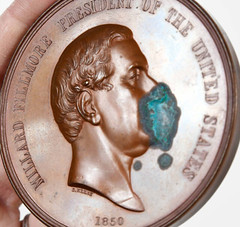 Condition:
good overall, light handling evidence, Millard Fillmore with corrosion spot on obverse
Condition:
good overall, light handling evidence, Millard Fillmore with corrosion spot on obverse
Here's a group lot of medals that caught my eye. Millard Fillmore has a teensy green snot problem on one; perhaps conservation could help. -Editor
To read the complete lot description, see:
GROUP OF EIGHT BRONZE PORTRAIT MEDALS
(https://www.brunkauctions.com/lot/group-of-eight-bronze-portrait-medals-4143791)
"Intercollegiate Current Events Contest/awarded by The New York Times/to/Richard E. Manning", bronze, 60 x 88 mm; Byrrh wines, "Pierre Le Guellec/Promotion 1956", silver, 68 mm; Home Insurance Company, 25 years service "Isaac W. Brooks", silver, 56 mm; Franklin Fire Insurance Company, 25 years service, "Charles F. Lee", silver, 56 mm; other assorted medals
Provenance:The Estate of Peter H. Tillou, Litchfield, Connecticut
Condition: good overall, typical rub and toning to a few
Another nice group from the same collection. -Editor
To read the complete lot description, see:
GROUP OF 11 AWARDED MEDALS
(https://www.brunkauctions.com/lot/group-of-11-awarded-medals-4143862)
1871 SEATED LIBERTY DIME 10C LOVE TOKEN "FELIX" EX-JEWELRY BUILDING SCENE (4293
Certification: Uncertified
Composition: Silver
Year: 1871
Engraved scenes are unusual. This one is crude, but works well in the small space. A well-worn piece that must have been treasured by its original owner. -Editor
To read the complete lot description, see:
1871 SEATED LIBERTY DIME 10C LOVE TOKEN "FELIX" EX-JEWELRY BUILDING SCENE (4293
(https://www.liveauctioneers.com/item/135413022_1871-seated-liberty-dime-10c-love-token-felix-ex-jewelry-building-scene-4293)
NOVA CONSTELLATIO COPPERS, PART 1
Greg Reynolds published the first part in a Greysheet series on the Nova Constellatio Coppers. Here's a short excerpt - see the complete article online. -Editor
In 1785, Nova Constellatio Coppers were minted in or near Birmingham, England. The history of minting and numismatic die preparation activity in the Birmingham area during the 1780s is very unclear in 2022, as few records survive. Demand, supply and circumstances relating to private copper coins changed dramatically circa 1789. There were business failures and changes in the industry of minting Coppers. I capitalize Copper to refer to circular copper items that were widely accepted as a medium of exchange, at least for a while, and were of a denomination understood by those who spent and received them in transactions.
For years, Robert Morris and Gouverneur Morris worked together on finance, currency and coinage matters, before they were both partners in the venture that produced Nova Constellatio Coppers. From 1781 to 1784, Robert Morris was the Superintendent of Finance for the United States government and Gouverneur Morris was the Assistant Superintendent.
Robert Morris arranged for assayer and coiner Benjamin Dudley to come to Philadelphia to evaluate coins then in circulation and to assist with a plan for U.S. coinage. By 1782, it was clear that Robert Morris and Gouverneur Morris were proposing a coinage system and a U.S. Mint.
There were a variety of Coppers in circulation in America. Until the late 1780s, any recognizable copper coin, pattern for copper coinage, pertinent token, imitation British halfpenny, and counterfeit or fantasy copper piece that weighed between 112.5 and 160 grains would probably have been accepted at par with a British halfpenny by most businesses in the U.S.
Nova Constellatio Coppers are not counterfeits, fantasies or tokens. They are privately issued coins that were intended to and actually did circulate widely in accordance with an accepted standard, probably in all states of the union during the 1780s. These are true coins with connections to major founding fathers. They feature an artistic design that reflects American concepts. Even coin collectors who never before thought much about them may enjoy owning at least one Nova Constellatio Copper.
To read the complete article, see:
Nova Constellatio Coppers, Part 1: Purpose & Meaning
(https://www.greysheet.com/news/story/nova-constellatio-coppers-part-1-purpose-meaning)
THE BOOK BAZARRE
A BONAPARTE ON HOLLAND'S COINS
This article from Künker discusses coin of the Kingdom of Holland relating to the family of Napoleon Bonaparte. -Editor
On 27 September 2022, Künker will auction off the collection of the Verschoor brothers. It contains what's probably one of the most important collections of coins from the Kingdom of Holland. Read about the fate of the short-lived kingdom and the numerous problems King Lodewijk had to deal with when introducing his new coins.
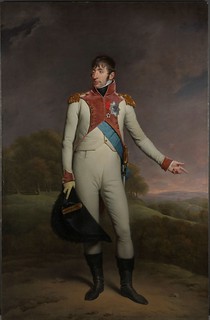 Napoleon's second-youngest brother bore several names throughout his life. He was baptized with the name Ludovicus. In Corsica, the little boy was called Luigi. In France, where his older brother Napoleon provided him with a military education, we was called Louis. And when his brother made him king of the new Kingdom of Holland in 1806, Louis became Lodewijk. Unlike many other relatives and generals of Napoleon who sat on the thrones of Europe, Lodewijk actually managed to endear himself to his subjects.
Napoleon's second-youngest brother bore several names throughout his life. He was baptized with the name Ludovicus. In Corsica, the little boy was called Luigi. In France, where his older brother Napoleon provided him with a military education, we was called Louis. And when his brother made him king of the new Kingdom of Holland in 1806, Louis became Lodewijk. Unlike many other relatives and generals of Napoleon who sat on the thrones of Europe, Lodewijk actually managed to endear himself to his subjects.
A new kingdom needs new coins. If you are interested in the issues of the short-lived Kingdom of Holland – which must not be confused with the Kingdom of the Netherlands – you should take a close look at Künker's Fall Auction Sales. One of the most important collections on this subject will be on sale. It was built up by experts: the Verschoor twins, the owners of a well-known Dutch coin shop. They specialized in the patterns and coins of Lodewijk Napoleon. Dim Verschoor even published an important paper on the subject. Let's have a look at what their collection tells us about the coinage of the Kingdom of Holland.
A King for the Netherlands
In June 1806, the then 28-year-old Lodewijk moved to his new realm. One of his plans was to change the country's coinage system. For the time being, he still used the old denominations of the United Provinces and continued to mint popular trading coins such as ducats. However, he wished to centralize the production of coins in a royal mint in Amsterdam. Since he lacked the funds for this undertaking, the then best-equipped mint of his kingdom in Utrecht fulfilled this task. It was to continue to mint the Dutch coins until the 21st century.
The probably most important change that Lodewijk had in mind for the coins of the former Republic was to put his portrait on the now royal coins. If you take a look at the Verschoor Collection in the Künker catalog, you will particularly be impressed by the variety of different patterns, which testify that the introduction of these new issues went anything but smoothly.
Head and Legend
The first obstacle was the portrait. Dutch mint masters had little experience in depicting crowned heads. They were given a medal of the French artist Jean-Louis-Marie George as a model for their designs and a competition was held. Six months after the original deadline had passed, the engraver Joan George Holtzhey from Amsterdam, who was well-known throughout Europe but rather advanced in years, was commissioned with the coin design. Another six months later, in May 1807, Holtzhey submitted his patterns. The king did not like them. When he learned about this, the over eighty-year-old petitioned to be allowed to withdraw from the task.
So the court turned to a French engraver, namely to Jean-Louis-Marie George, who had created the medal that had been used as a model. He accepted and indeed quickly submitted patterns for a 50-stuiver coin with a successful portrait that satisfied the competent authorities.
Lodewijk Napoleon: 50 stuiver 1807, bronze pattern. About FDC. Estimate: 10,000 euros. From Künker auction 373 (26/27 September 2022), No. 1088.
However, now the language barrier turned out to be a problem. A pattern from the Verschoor Collection perfectly illustrates this: It is an off-metal strike in copper from the dies of a planned new 50-stuiver silver coin, which had been created by George in Paris and was then sent to the Netherlands. On the reverse, the word kingdom was misspelled – KONING RIK instead of KONINGRIJK – and a VAN
was mistakenly placed before HOLLAND. Both mistakes were criticized and then changed. Nevertheless, even some later patterns for other coins still displayed the wrong spelling. In defense of the engraver it should be said that George was only trying to follow contradictory and partially incorrect instructions from the Netherlands.
Lodewijk Napoleon: Rijksdaalder, 1809, Utrecht. Extremely rare. FDC. Estimate: 15,000 euros. From Künker auction 373 (26/27 September 2022), No. 1085.
And then there was the question of the royal title. Originally, Lodewijk had announced that he wanted to be referred to in the legend as LODEWIJK DE EERSTE, KONING VAN HOLLAND. With the new commission for George, a small but meaningful NAP.
for Napoleon was added. Therefore, the already shown pattern of the 50-stuiver coin reads NAP. LODEW. I. KON. VAN HOLLAND.
When the production finally was about to start, His Majesty changed his mind and demanded NAP.
to be placed after, not before the LODEW.
Requests like this one naturally resulted in further delays as completely new dies had to be created. Regarding one of the top pieces of the collection, the 1809 reichstaler, the mistakes of the pattern were corrected and it shows the title in the correct order, as we find it on most coins from the Kingdom of Holland.
Lodewijk Napoleon: Copper pattern in the size of a reichstaler, 1808. Minted with the minting presses that were produced in Paris for the Utrecht mint. Ex. Coll. Virgil M Brand 6 (Sotheby's, Amsterdam 1984, No. 41) and Jacques Schulman, Amsterdam, purchased in 1924. FDC. Estimate: 300 euros. From Künker auction 373 (26/27 September 2022), No. 1077.
Technical Difficulties
Moreover, there were technical issues. Lodewijk wanted to modernize. He wanted to purchases the most advanced minting machines of the time, namely those that were used in Paris. These machines had among other things a collar that could be used to create edge inscriptions. After some toing and froing, several of the expensive presses were ordered from François Salneuve in Paris. However, here too, not everything went smoothly. For one, it took more time to complete the machines as expected because Salneuve lost a finger during the work. And a fiasco occurred when the machines were to be demonstrated to the responsible minister in Utrecht: Coins got stuck in the collar, got wedged in the complicated mechanisms of the machines and damaged them. Stamps hit each other without a blank between them and broke. The edge inscription had been illegible anyway. It took months to repair and overhaul the machines to the point where a new demonstration could be scheduled. Finally, the brand-new minting presses were ready for use – even if their productivity fell short of expectations. The Verschoor Collection contains some fascinating test issues that were produced with the new machines.
The King Abdicates
The presses had been operational since January 1809, but there were still more problems and hiccups to be solved before they supplied coins. Just a few months later, they stopped again. For Lodewijk had to abdicate as early as on 1 July 1810. History books report that Napoleon had had enough of his hesitant brother, who seemed to have forgotten to whom he owed his crown. Indeed, he was quite reluctant to carry out the emperor's orders out of concern for his subjects. This was especially true regarding Napoleon's Continental Blockade, which was intended to force Great Britain's economy to its knees but was highly damaging to the Netherlands at the same time.
So Napoleon decided to take the Kingdom of Holland and turned it into a province of France. Lodewijk – who was now Louis again – went into exile in Austria. The Dutch kept fond memories of him. After Napoleon's fall, it was even considered to reinstate him as king, but they then decided to go with someone from the House of Orange who did not bear the loaded name of Bonaparte
.
Louis' life ended in Italy. One might wonder whether his friends there called him Luigi again. The vagaries of history later led to his son becoming Emperor of France as Napoleon III.
Top image: Charles Howard Hodges: Portrait of Lodewijk Napoleon, King of Holland, 1809.
Literature:
George Sanders: De Parijse graveur Jean-Louis-Marie George (1755/6-1814), in: De Beldenaar 46, 2022, No. 3., pp. 134-155.)
To read the complete article, see:
A Bonaparte on Holland's Coins
(https://www.kuenker.de/de/information/presseinformationen/aktuelle-mitteilungen/444)
"CONFEDERATE" COINS IN MACON TIME CAPSULE
While relocating a statue of a Confederate soldier, workers in Macon, GA uncovered two time capsules -Editor
Two time capsules found during the relocation of Macon's Confederate monuments were opened during a ceremony on Friday.
Workers moved the statue of the Confederate private, which paid tribute to confederate soldiers of Macon, from downtown Macon to a park outside Rose Hill cemetery in June.
In a Facebook post, The Historic Macon Foundation revealed what was inside the two boxes and shared some local history along with the photos.
One capsule is from 1879, while the other comes from a few years down the road, in 1956.
The Foundation says the one from 1879 was actually preserved better than the one from 1956, as moisture seeped into that one over time and damaged several items.
Several other things were also found in the copper boxes; all a testament to the history of Macon and its roots.
The article referred to "Confederate coins". Although unclear from the supplied photos it's clear these are more likely "coins from the pockets of Confederates" rather than actual coins produced by the Confederate States of America, which are quite scarce and all accounted for. -Editor
Macon spokesperson Chris Floore says the items will remain in the custody of the Cannon Ball House Museum. It's unclear whether some of them will be publicly displayed.
Director of the Cannonball House Cheryl Aultman says they will be putting the collection on display as quickly as possible. The House will be closed for a couple of weeks this month for remodeling and will be focused on putting the exhibits into place while they are closed.
To read the complete article, see:
Contents of Macon Confederate statue time capsules revealed
(https://www.13wmaz.com/article/news/local/macon-confederate-statue-time-capsules-revealed/93-a43b164d-ac59-4323-a520-82dc3287e556)
THE JUNK ON THE 1932 SUN YAT-SEN DOLLAR
In her Chinese Money Matters blog Helen Wang, Curator of East Asian Money, The British Museum discusses a photo of the junk pictured on the 1932 Sun Yat-sen silver dollar coin. -Editor
There are two photographs on the University of Bristol's Historical Photographs of China website that the caption associates with the junk on the 1932 Sun Yat-sen silver dollar.
Caption: This photograph of a sea-going, becalmed junk appears to be have been used for engraving the reverse side dies of the 1932 Chinese silver dollar (one yuan). This coin featured a Chinese junk, sailing to the right, with three birds flying above the mast tops. Appearing to the right of the junk's prow is a rising sun. On the obverse side was a portrait of Sun Yat-sen, facing left. The design of the ‘Junk Dollar' or ‘Sun Yat-sen Dollar' was unpopular, as the rising sun suggested Japan and the three geese, Japanese bombers. The birds and the rising sun were omitted when the coin was minted again in the following years.
The photographs are in the Oliver Hulme Collection. Oliver Hulme (b.1882) worked for the Chinese maritime customs service and later for the China Post Office.
Many thanks to Jamie Carstairs, Senior Digitisation Officer of Special Collections, ASSL at the University of Bristol, for bringing the photographs to my attention.
The article also illustrates electrotypes of patterns shown by the Royal Mint in 1932. -Editor
To read the complete article, see:
89. PHOTOGRAPHS OF THE JUNK ON THE 1932 SUN YAT-SEN SILVER DOLLAR COIN
(https://chinesemoneymatters.wordpress.com/2022/08/23/88-photographs-of-the-junk-on-the-1932-sun-yat-sen-silver-dollar-coin/)
AUSTRALIAN SIGNALS DIRECTORATE COIN
Back in July the Royal Mint issued a commemorative 50-pence coin celebrating mathematician and computer scientist Alan Turing. The designers incorporated a hidden code into the design. Now the Royal Australian Mint has released its own coded coin commemorating the Australian Security and Intelligence Organisation. -Editor
Your spy skills could soon be put to the test by a new 50-cent coin covered in secret, coded messages.
The limited-edition commemorative coin will be released on Thursday to mark the 75th anniversary of the nation's foreign intelligence cybersecurity agency, the Australian Signals Directorate (ASD).
While the coin is not intended for circulation, 50,000 specialty coins will be available for purchase from the Royal Australian Mint, each featuring four levels of coded messages to crack.
ASD director-general Rachel Noble said the coin celebrated the work of the agency's members and the evolution of code-breaking.
"Back in World War II, our people, military and civilian, and mostly women … used pencil and paper to decode Japanese military codes, and then re-encode them to send them out to the allies to let them know where Japanese war fighters were," she said.
"We have used that part of our history in different layers, which represent the progress of encryption and technology through our 75 years."
The coin serves a larger purpose than just being a fun puzzle to solve, with Ms Noble saying those who crack the codes could be "pretty well placed" to get a job at the ASD.
"We thought this was a really fun way to engage people in code-breaking with the hope that, if they make it through all four levels of coding on the coin, maybe they'll apply for a job at the Australian Signals Directorate."
Well, it didn't take long for solutions to emerge. Within an hour a Tasmanian teen became the first to correctly crack the code. Thanks to Don Cleveland for passing this along. -Editor
It was meant to be the coin with a secret message that was tough to decode.
The commemorative 50c piece, to mark the Australian Signals Directorate's 75th anniversary, features four unique layers of encryption which contain special messages about the intelligence agency.
However, just an hour after its release yesterday, a 14-year-old boy from Tasmania became the first to correctly crack the code, which features a combination of coding dating back thousands of years and more modern binary code.
During a Lowy Institute Q&A, ASD Director-General Rachel Noble insinuated the message had been figured out much quicker than they expected, and joked that they were hoping to recruit the youngster.
"At 8.45 in the morning we put up our web forum and said, 'hey, if you think you've got the answers, fill in the form'," Noble said.
"And believe it or not, a boy, 14 years old, in Tasmania was the first person in just over an hour to get all four right — it's unbelievable."
Her comment prompted laughs, as did the notion the teen could become the next member of the spy agency.
"So, we're hoping to meet him soon," she said, adding under her breath "and recruit him".
However, Noble also announced there was a fifth level of encryption contained in the coin, meaning there's one more message left for the teenager to decode.
I can see a new numismatic specialty emerging - coded coins. Although few explicitly incorporate secret codes, there are many examples using Morse code, braille and other public codes. This would make an interesting survey article or exhibit. -Editor
To read the complete article, see:
Coded new 50c coin solved by Tasmanian teen an hour after its release
(https://www.9news.com.au/national/coded-50c-coin-solved-by-tasmanian-teen-an-hour-after-its-release/9b526a56-b12e-49ce-8640-a09a5fdaa96b)
To read the earlier E-Sylum article, see:
ROYAL MINT HONORS ALAN TURING
(https://www.coinbooks.org/v25/esylum_v25n28a19.html)
LOOSE CHANGE: SEPTEMBER 4, 2022
Here are some additional items in the media this week that may be of interest. -Editor
In an article published August 25, 2022, Coin World reveals more details about the 2021 theft of error coins from the Denver Mint. This is why the hobby will always need fulltime journalists. -Editor
The 2021 theft of error coins from the Denver Mint involved 2021-D Kennedy half dollars and 2021-D America the Beautiful quarter dollars, according to Richard Delmar, deputy director of the Treasury Department's Office of Inspector General.
The errors were pieces that, after production, had been kustered
— waffle-canceled in machinery manufactured by the Dutch firm Kusters Engineering. The machinery uses a series of equally spaced knives to deform a coin into a shape resembling a rippled potato chip.
Coin World was provided a redacted Report of Investigation Aug. 17 pursuant to a Freedom of Information Act request. Coin World filed the FOIA request July 5 after Treasury Department officials did not provide responses to questions posed via telephone and email.
What is a coin collector's favorite treat? "Mint kustered", of course. -Editor
To read the complete article, see:
Treasury OIG report offers Denver Mint theft details
(https://www.coinworld.com/news/us-coins/treasury-oig-report-offers-denver-mint-theft-details)
David Pickup passed along this article about a veteran's longstanding dept of five shillings. -Editor
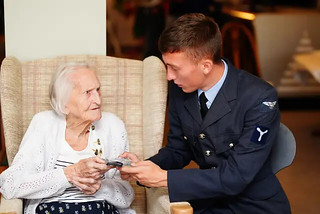 A 99-year-old RAF veteran has had her Second World War debt repaid when she was presented with a set of five shilling coins.
A 99-year-old RAF veteran has had her Second World War debt repaid when she was presented with a set of five shilling coins.
Peggy Terry served with the Women's Auxiliary Air Force and when she was discharged in 1945 was still owed the money.
And 77 years later, the debt was repaid by the RAF during a special ceremony with friends and family at Mrs Terry's home in Gorslas, Carmarthenshire.
To read the complete article, see:
99-year-old veteran has wartime debt repaid by RAF
(https://www.nwemail.co.uk/news/national/20683744.99-year-old-veteran-wartime-debt-repaid-raf/)
FEATURED WEBSITE: BANKNOTE ART CONCEPT
This week's Featured Web Site is Banknote Art Concept, a website devoted to money art.
Banknote Art Concept™ is an initiative that brings together creating professionals in art, marketing and communication, sharing a spirit and philosophy to communicate, educate and share individual and group experiences related to Money Art and Art Fiduciaire.

